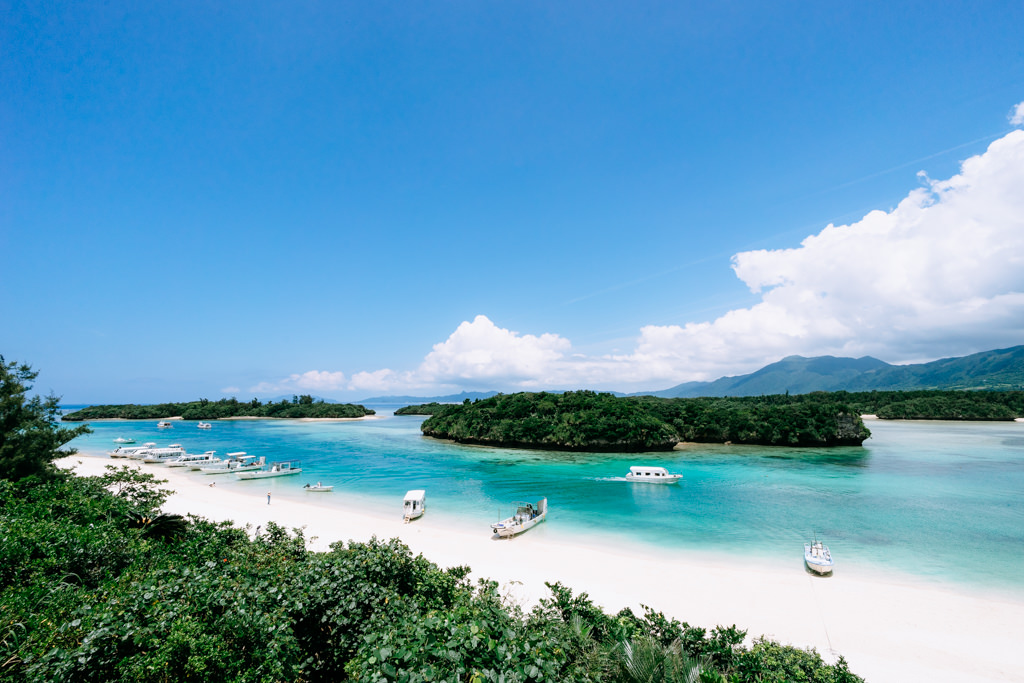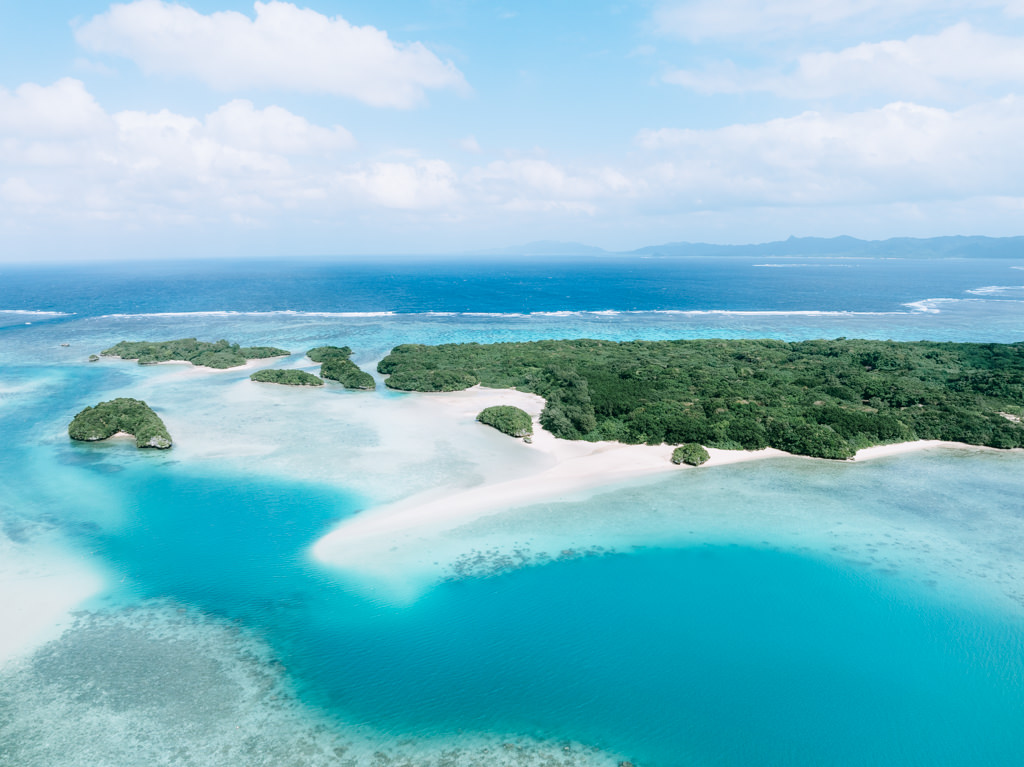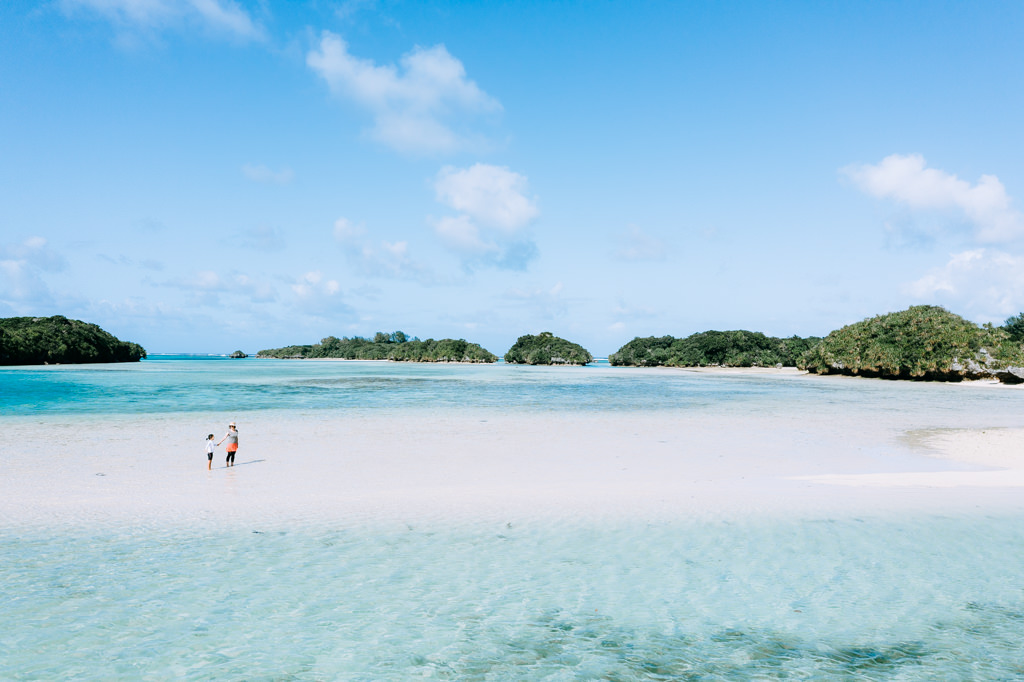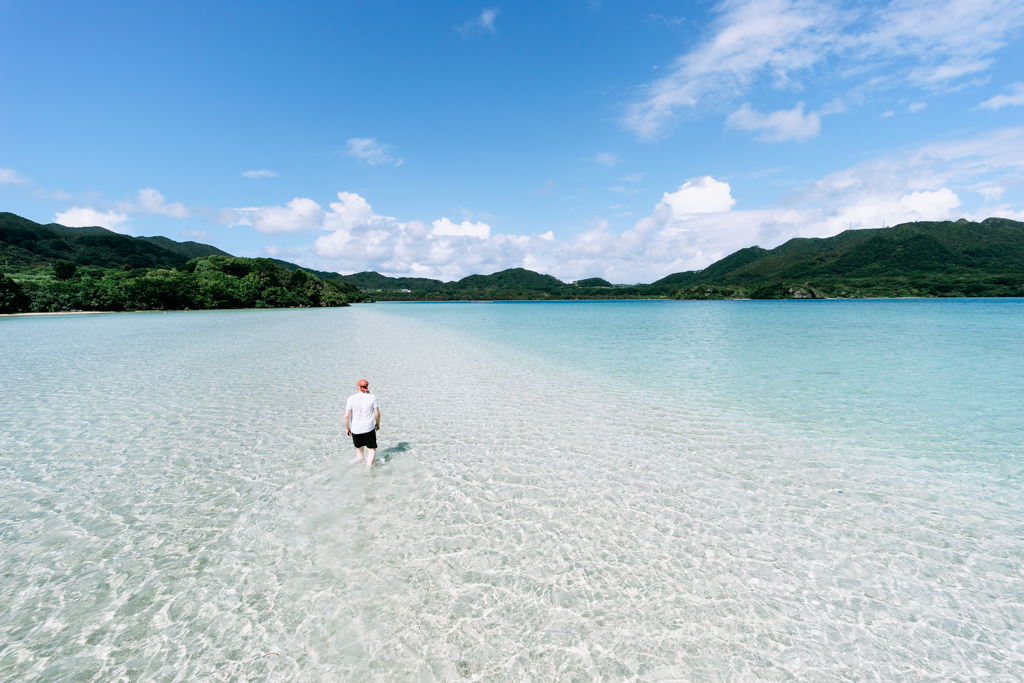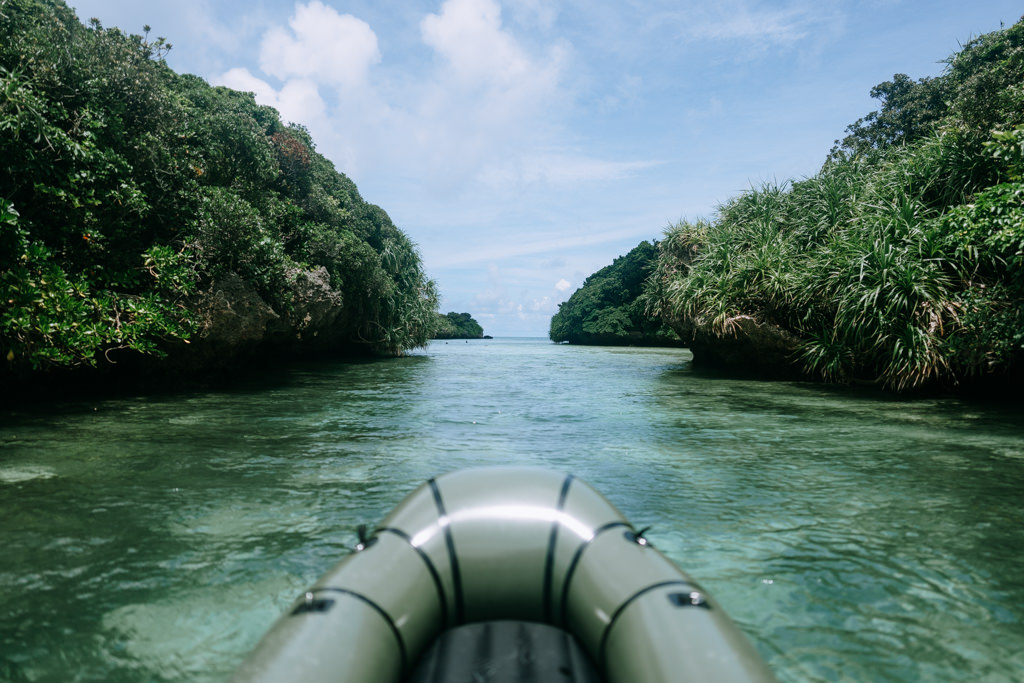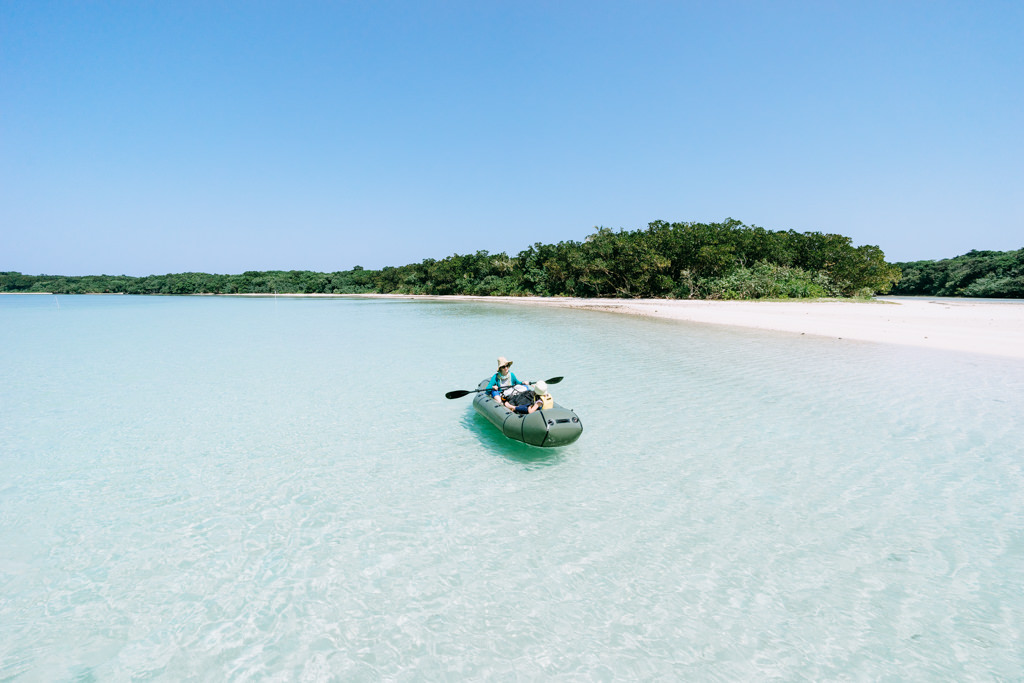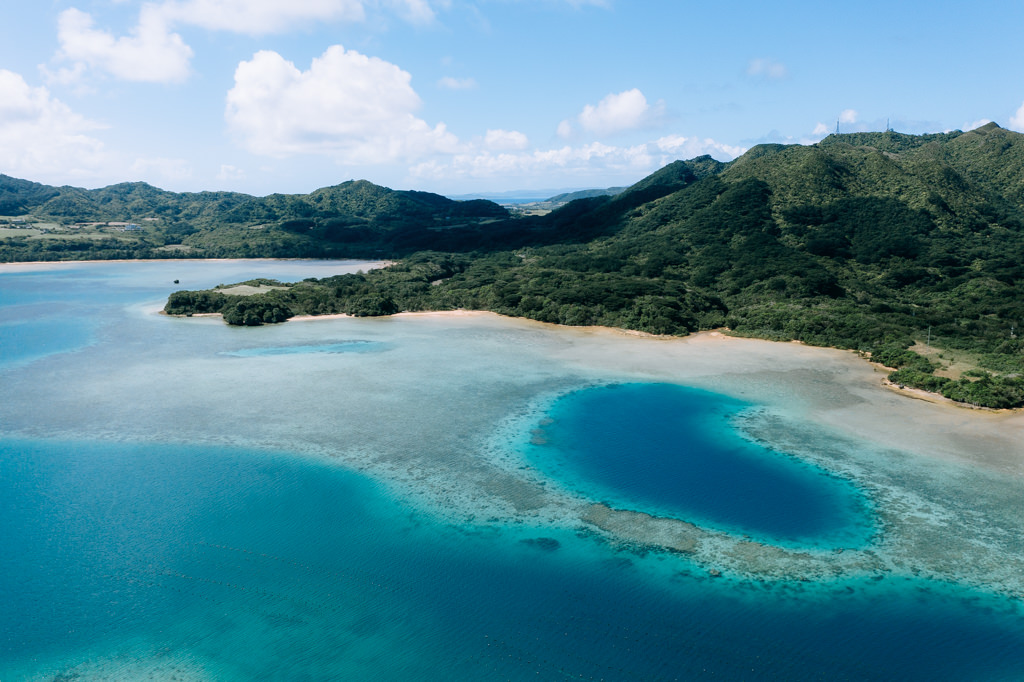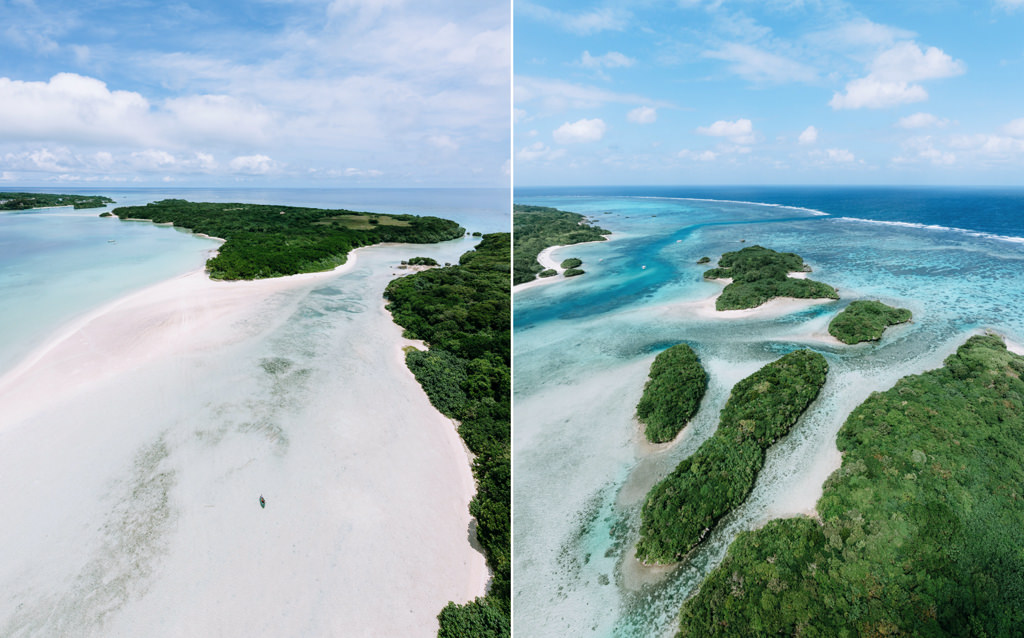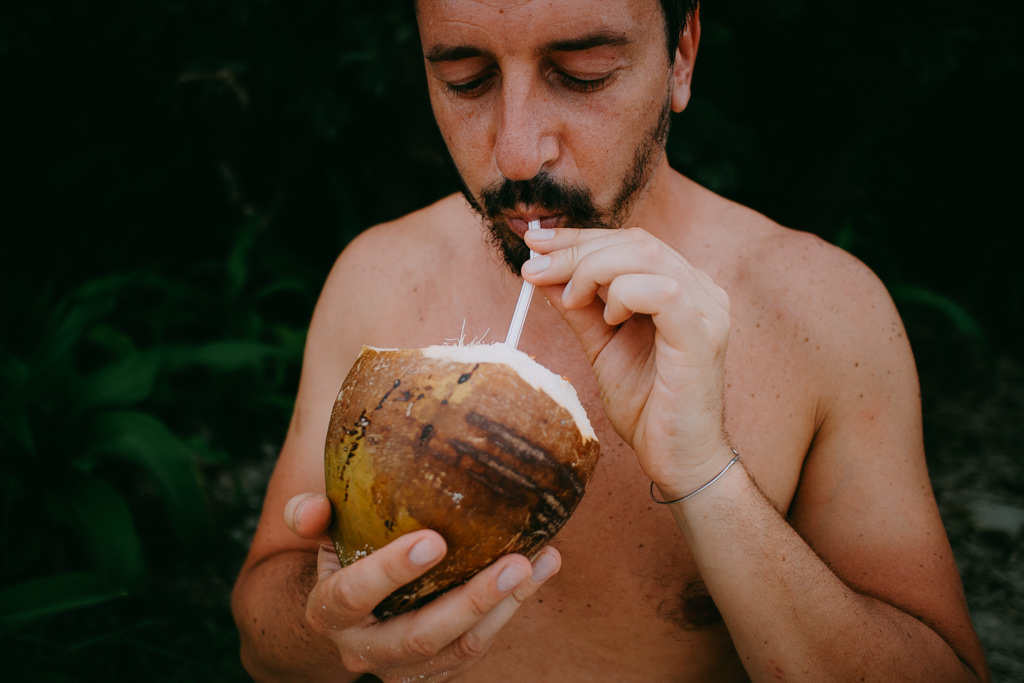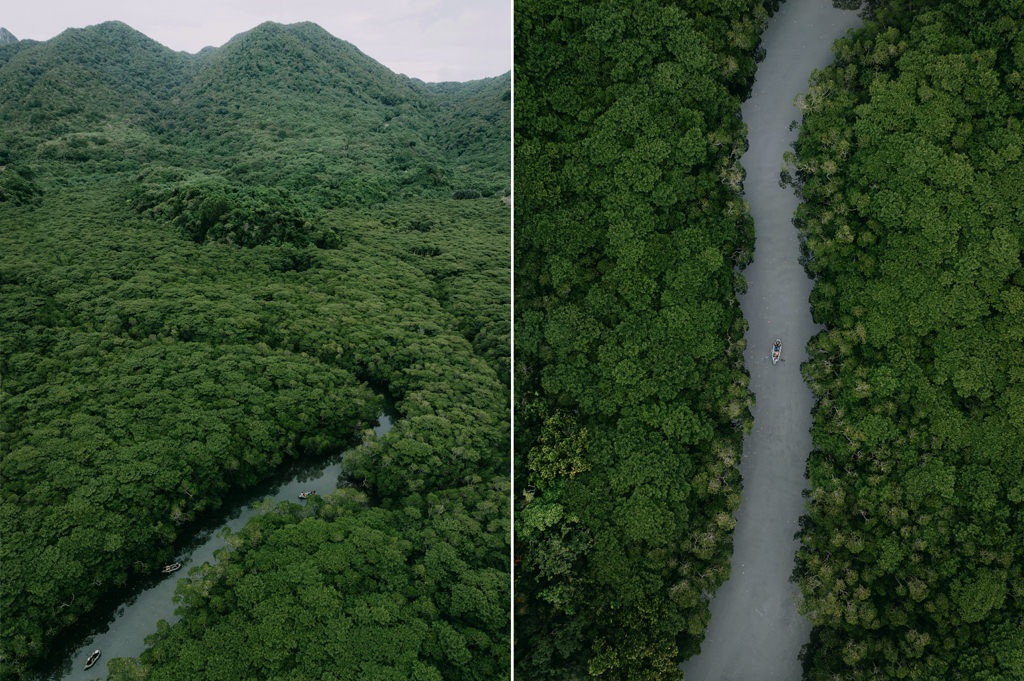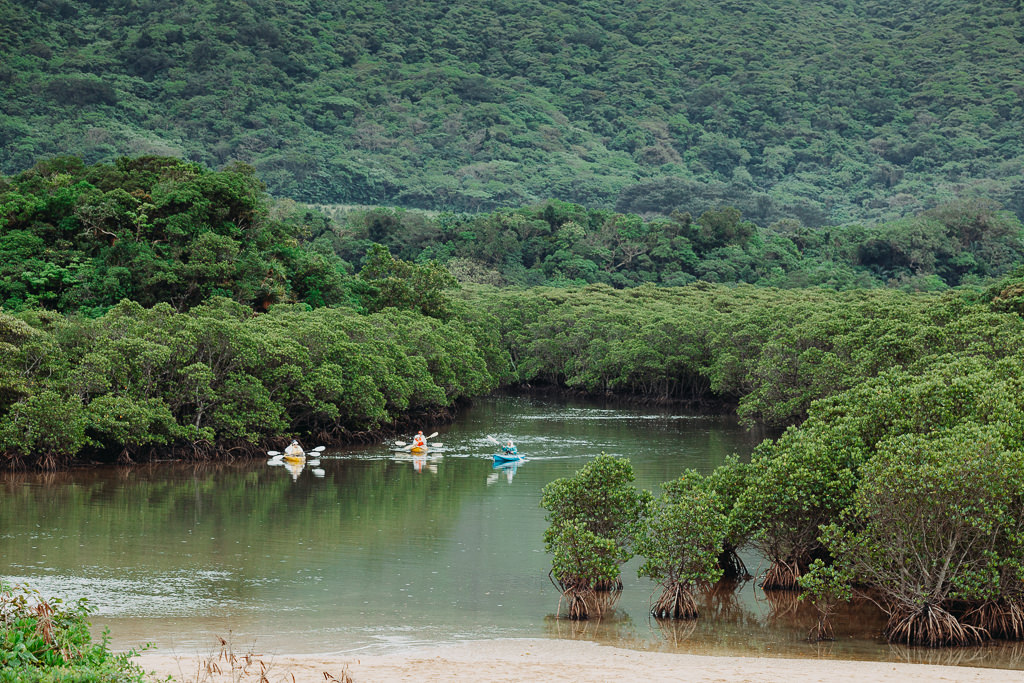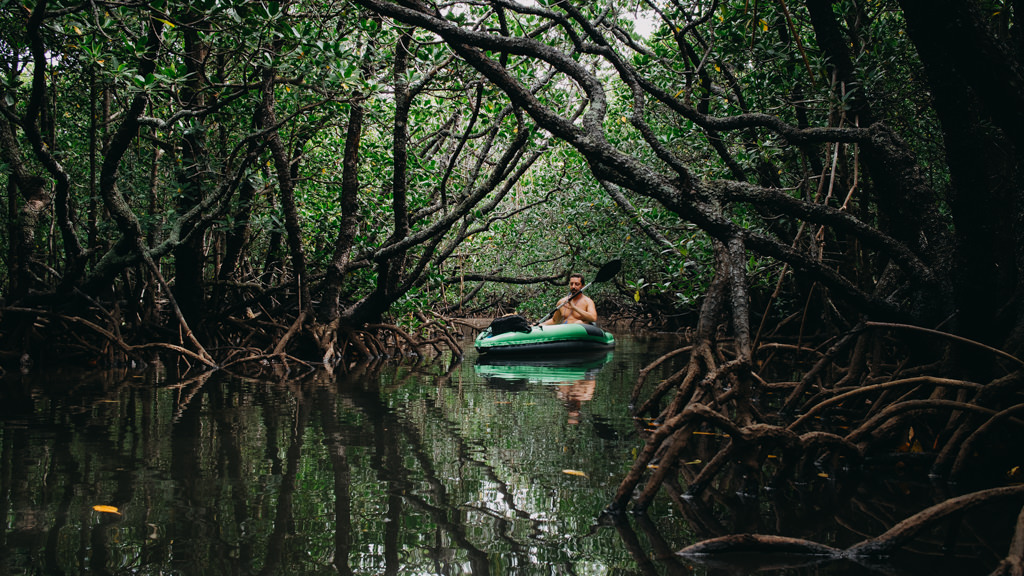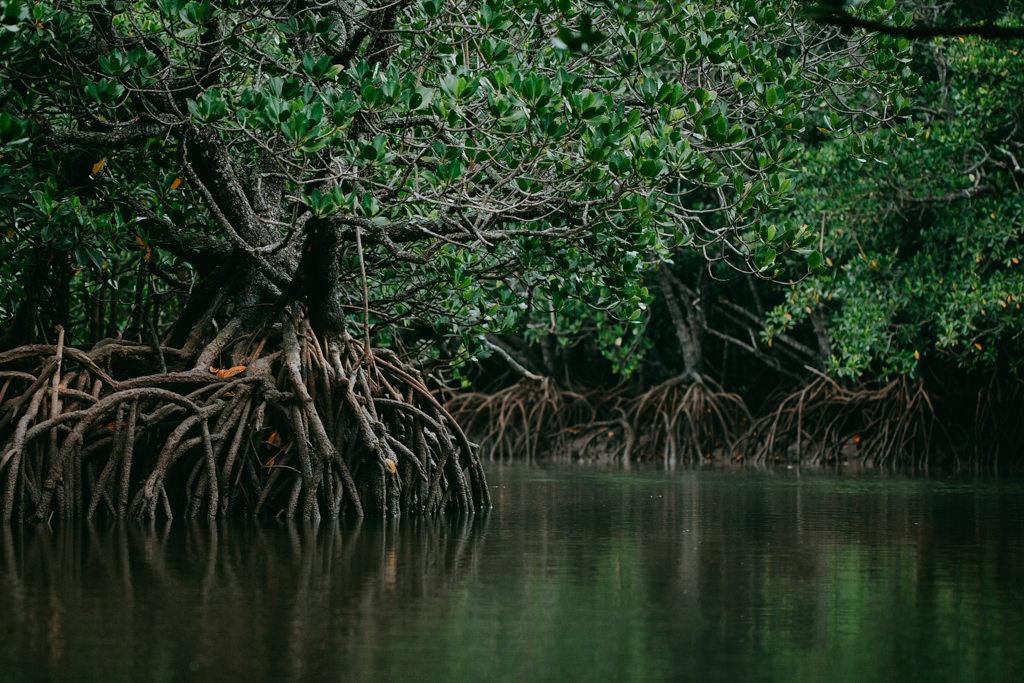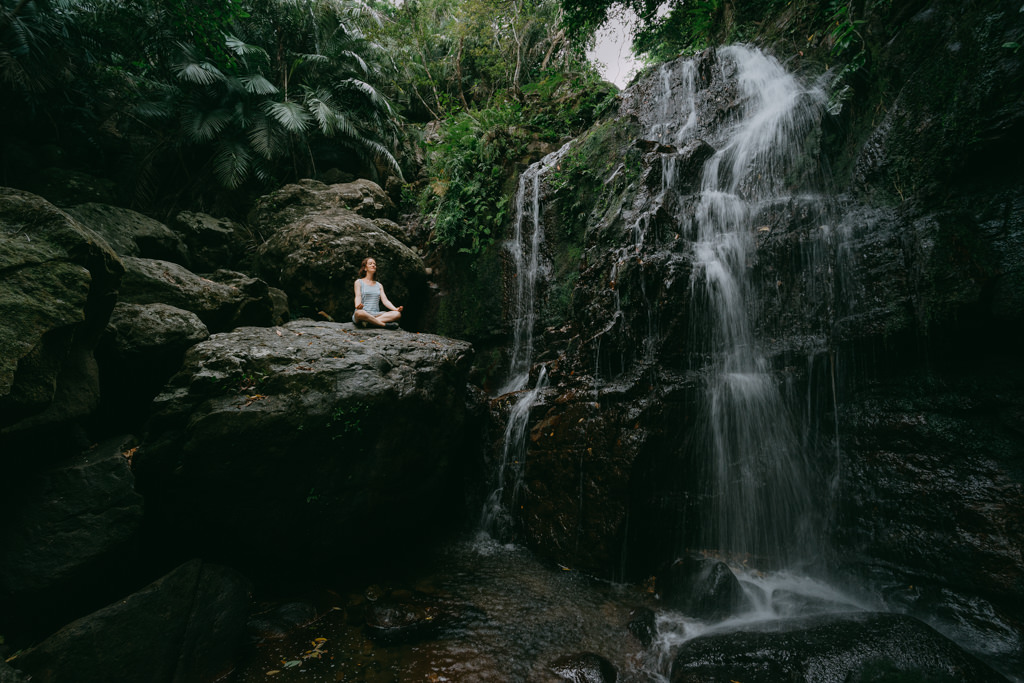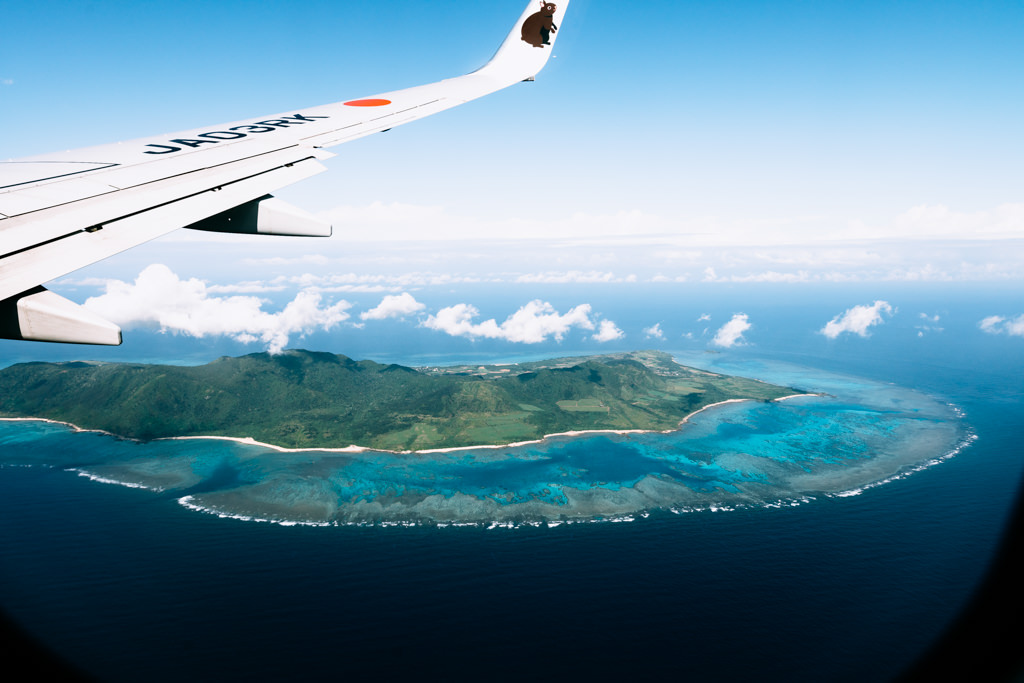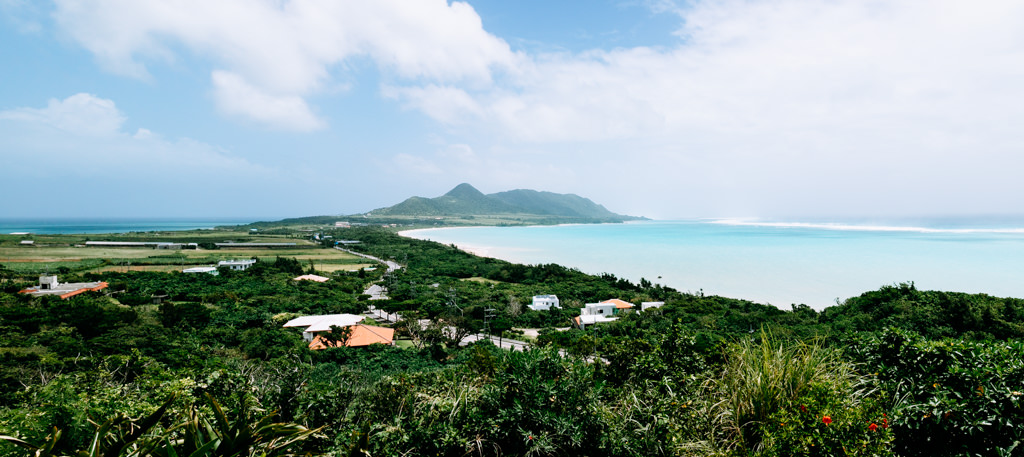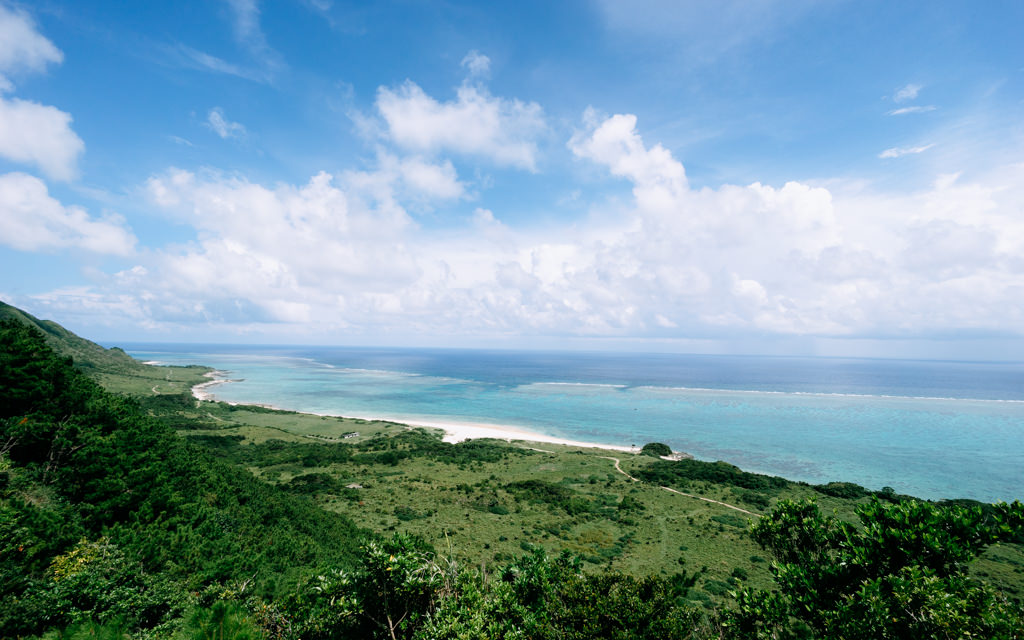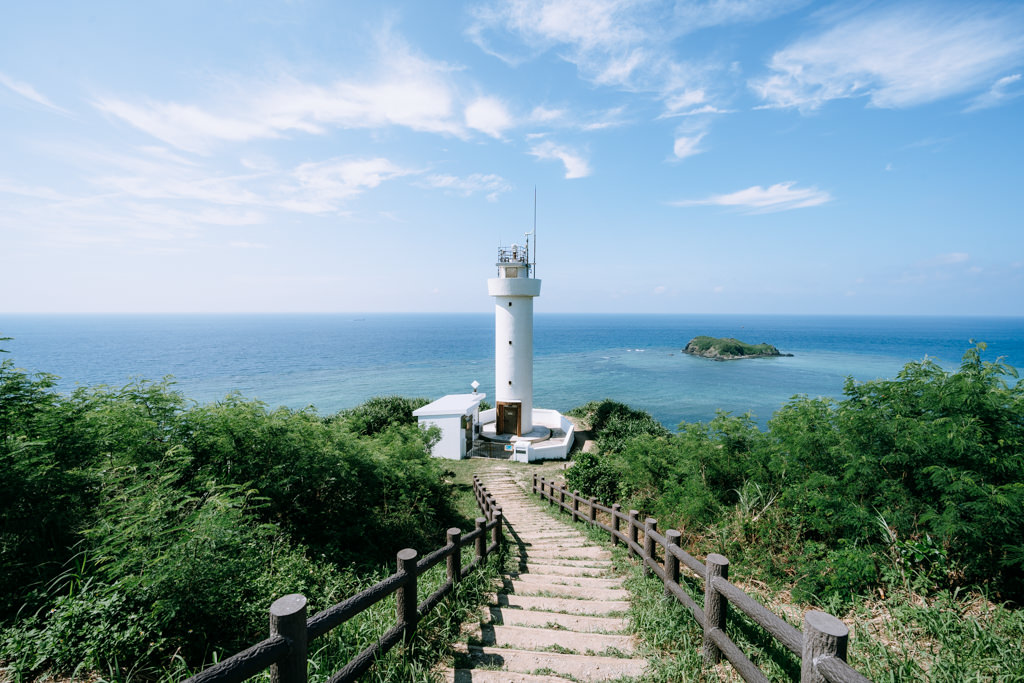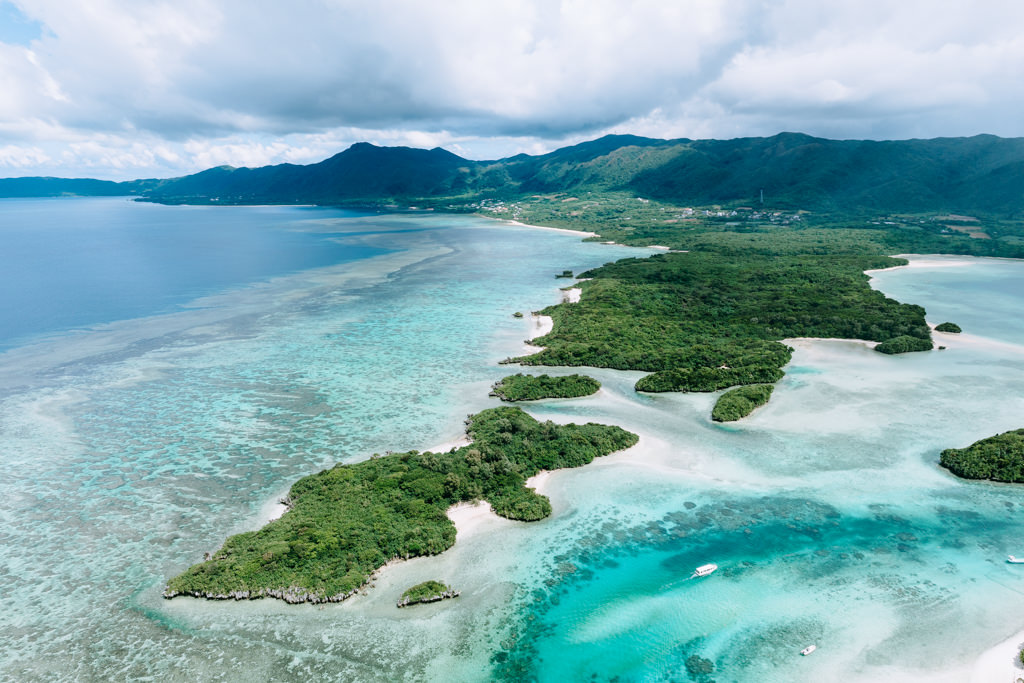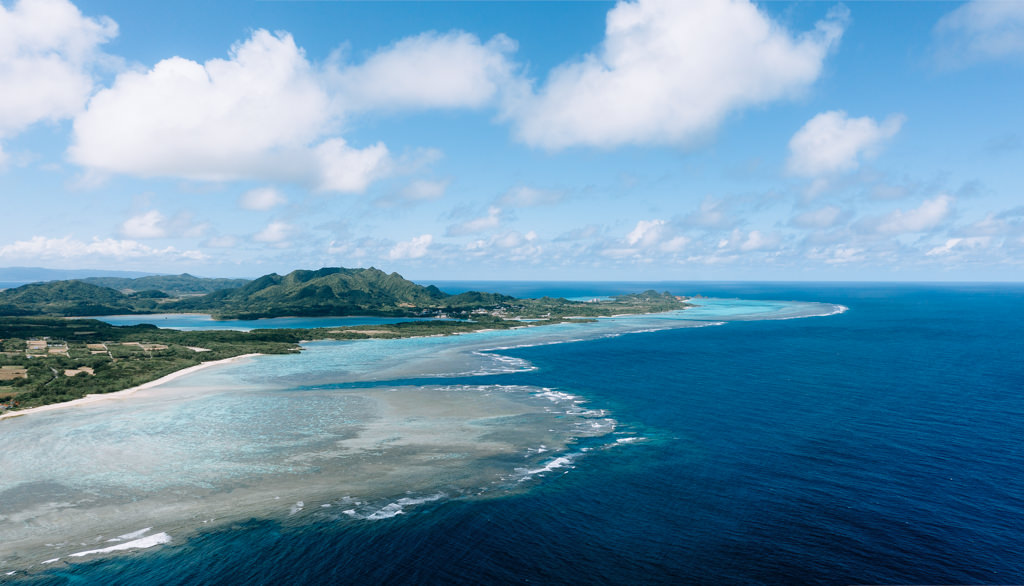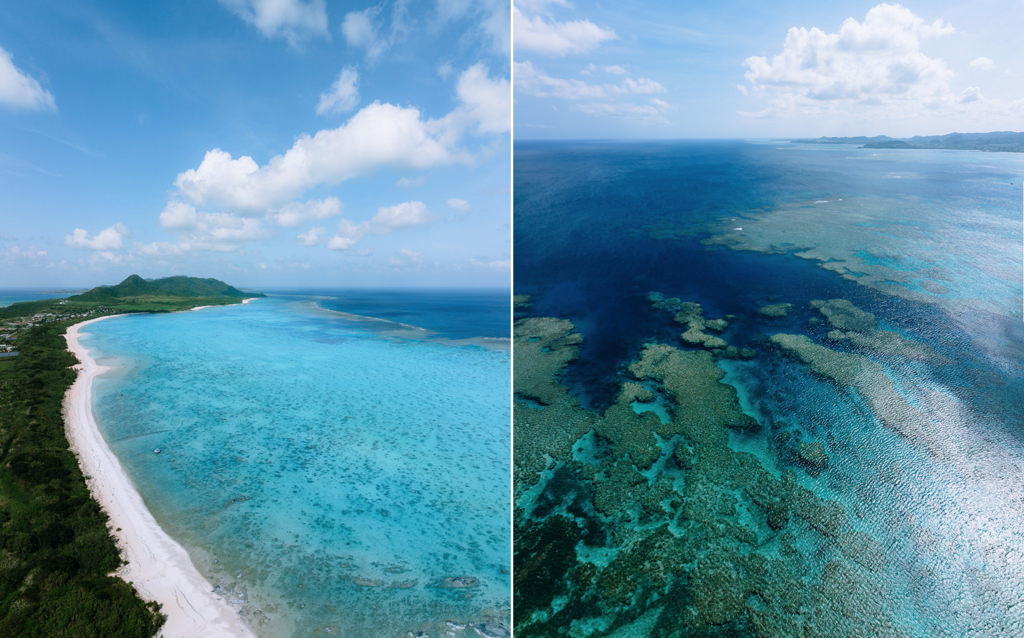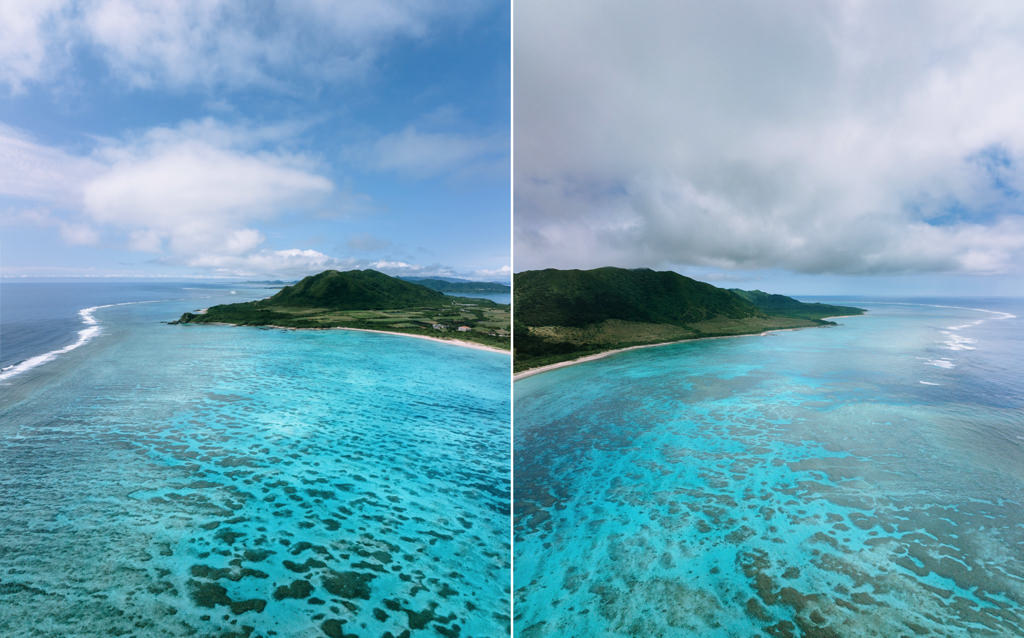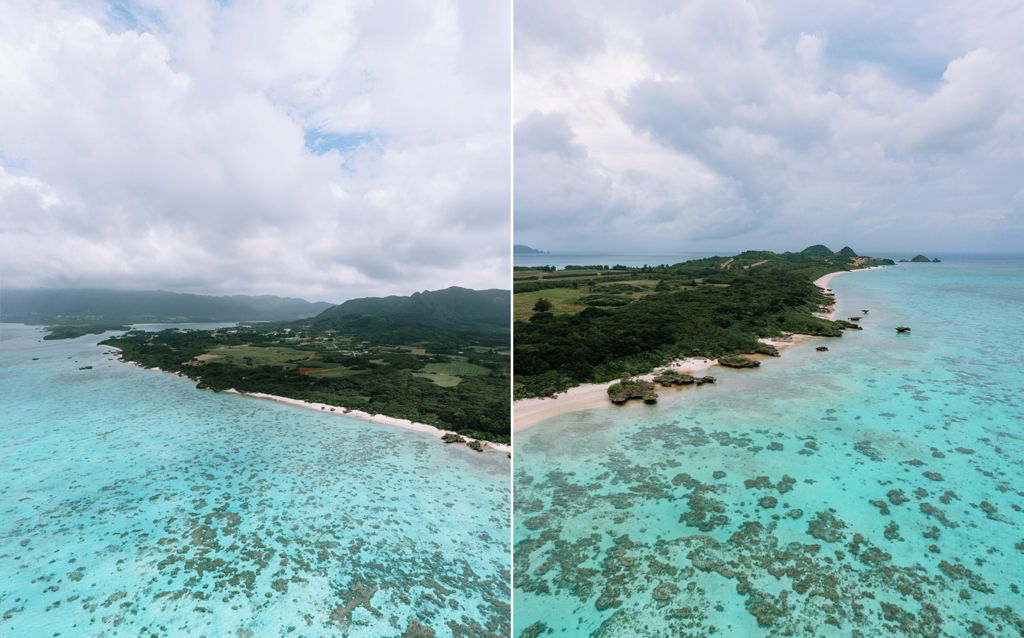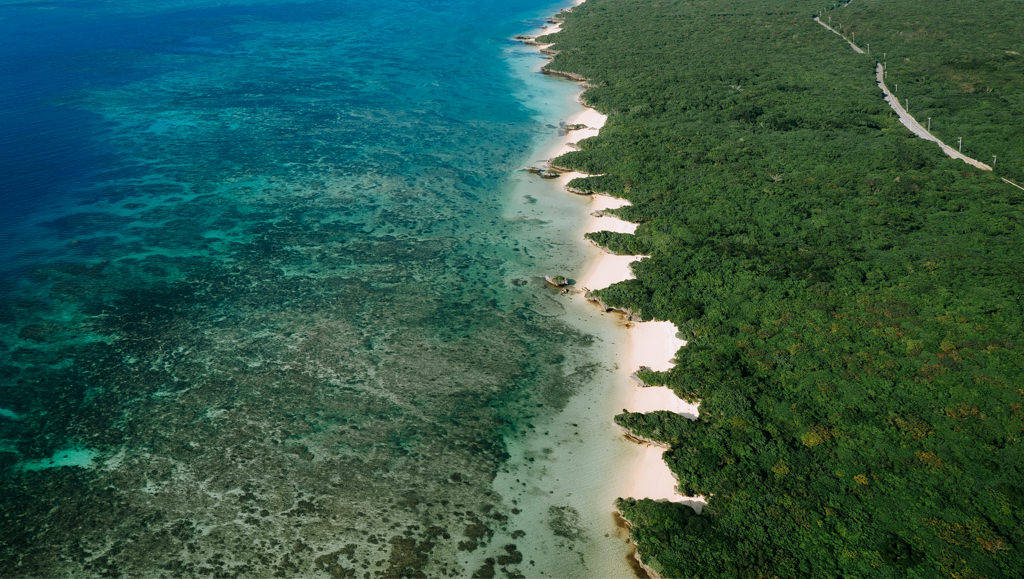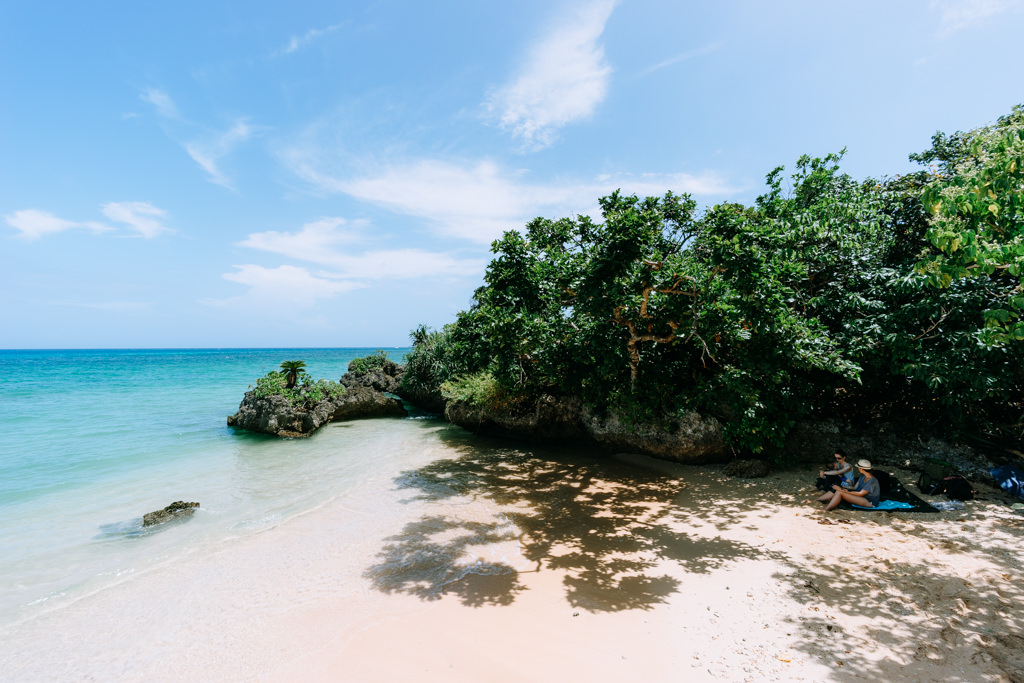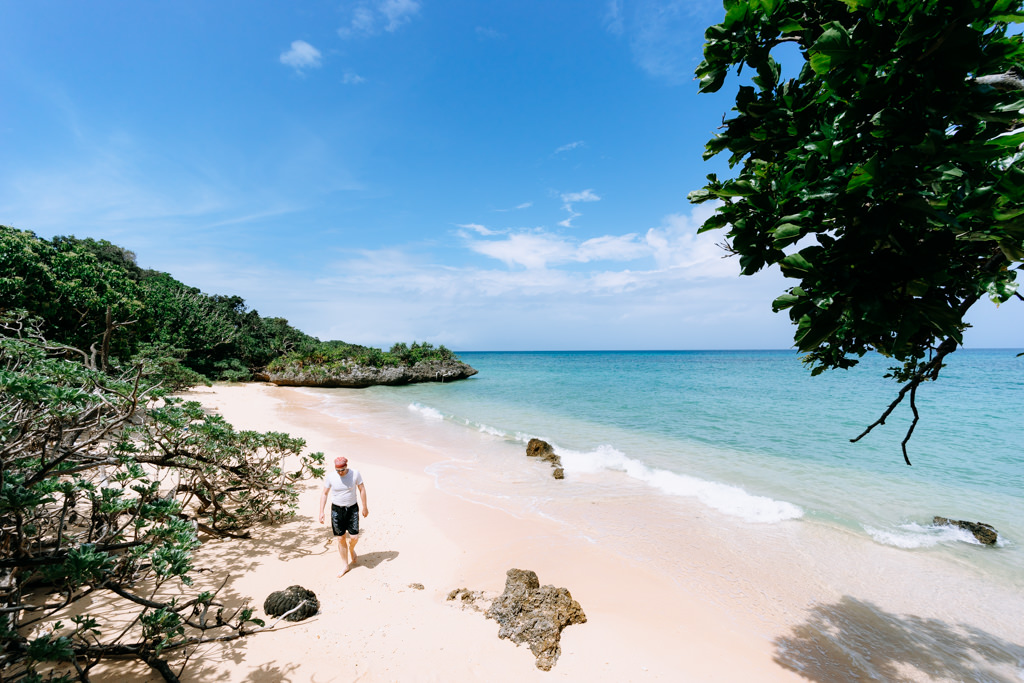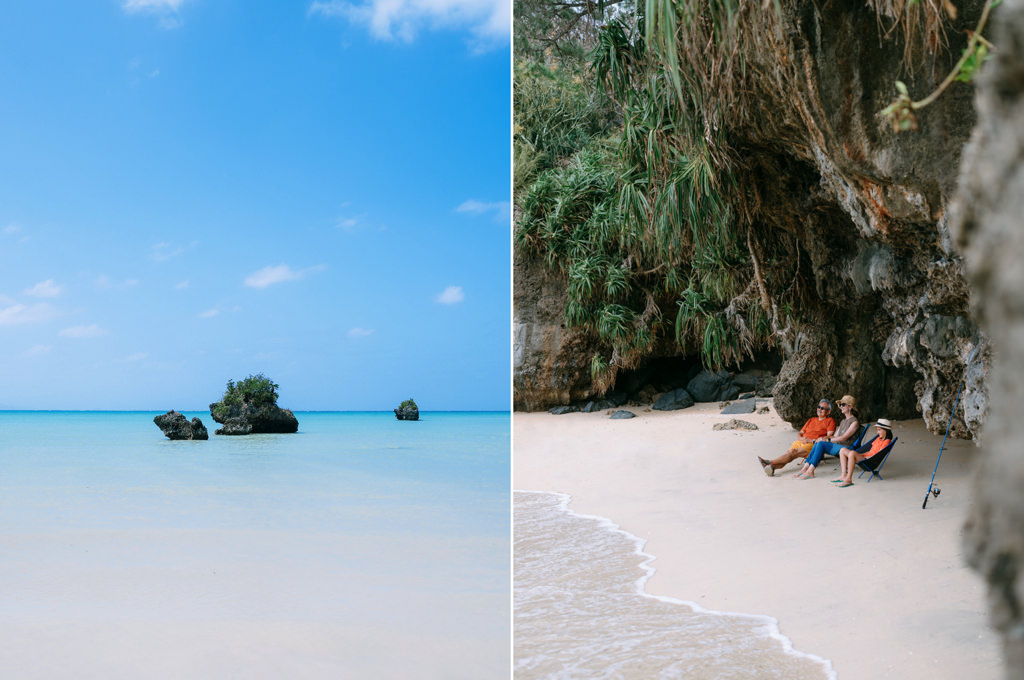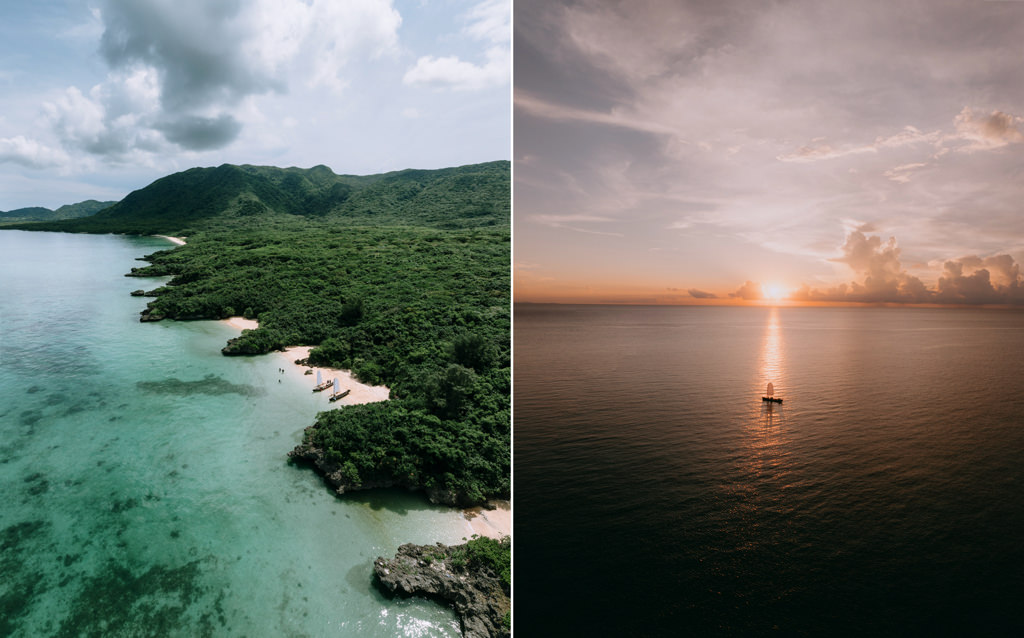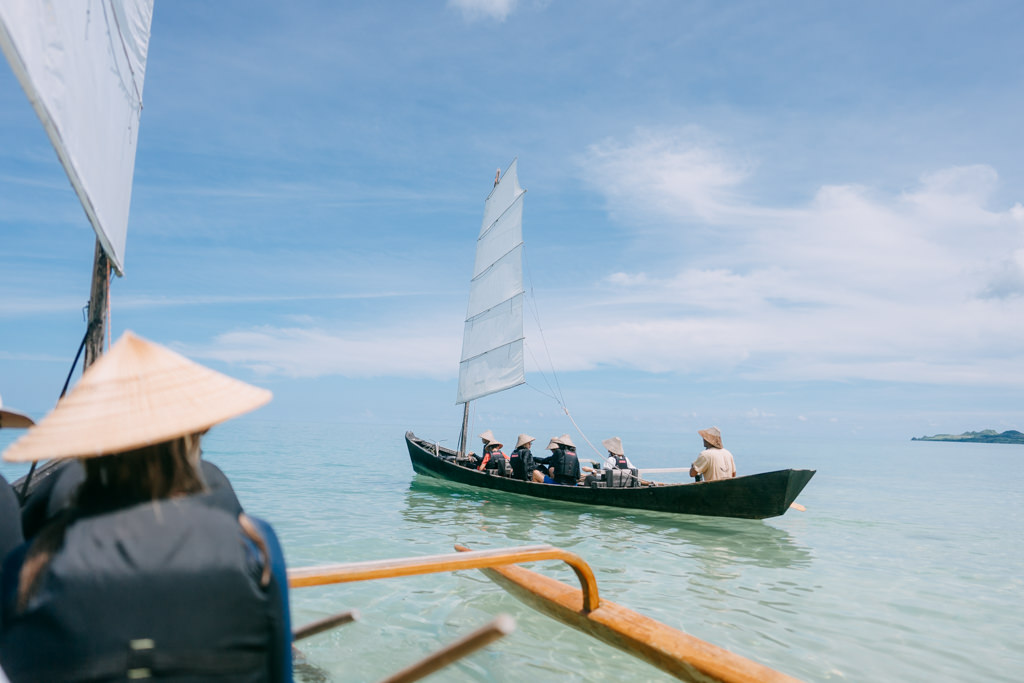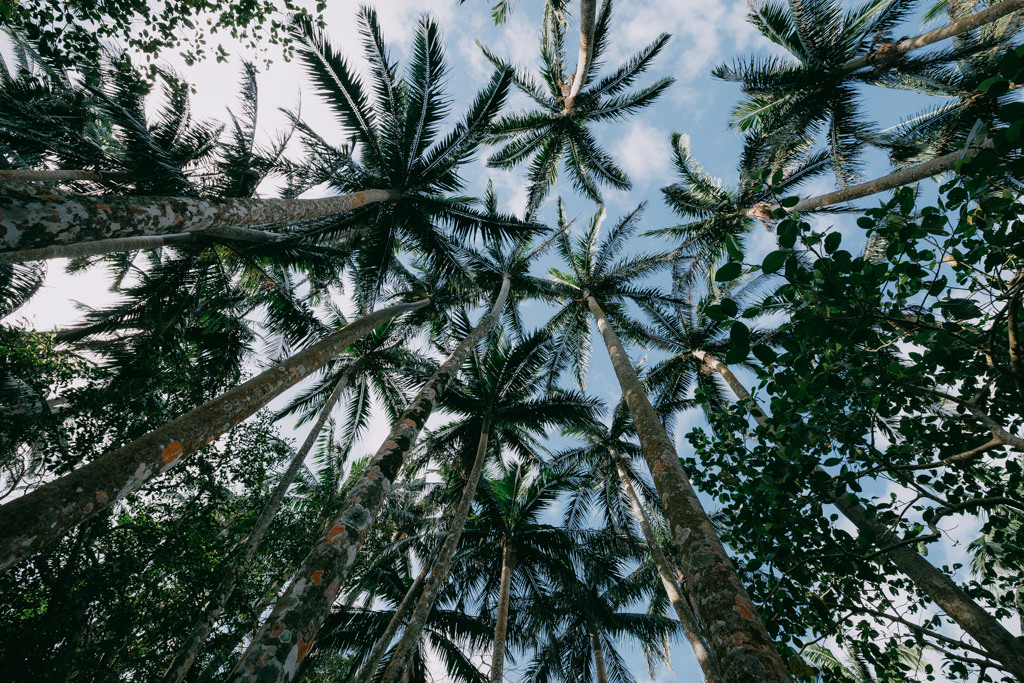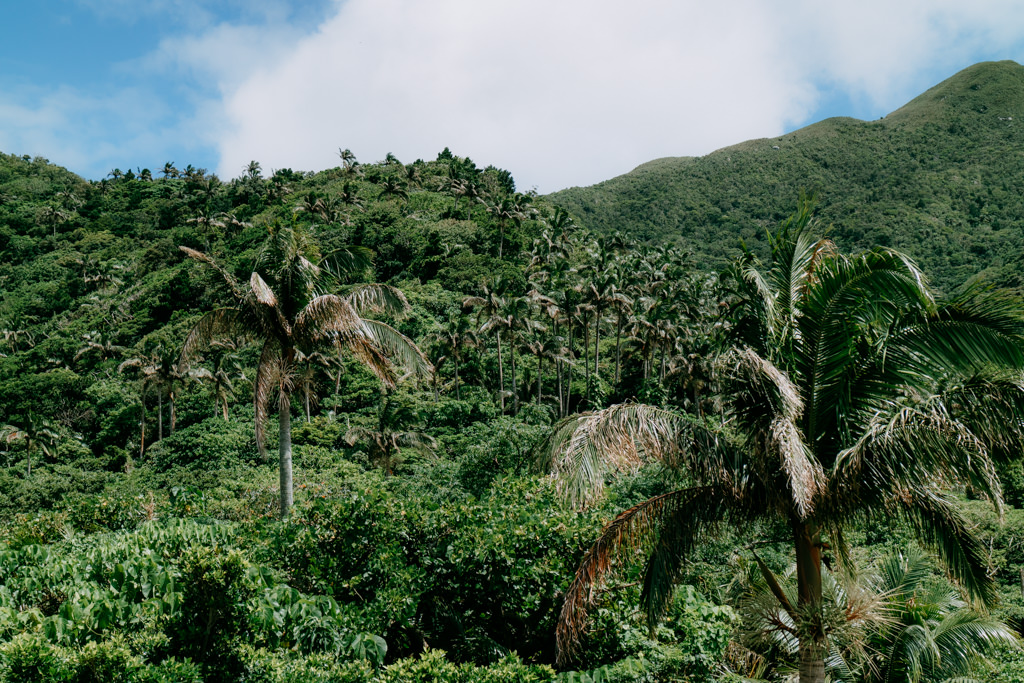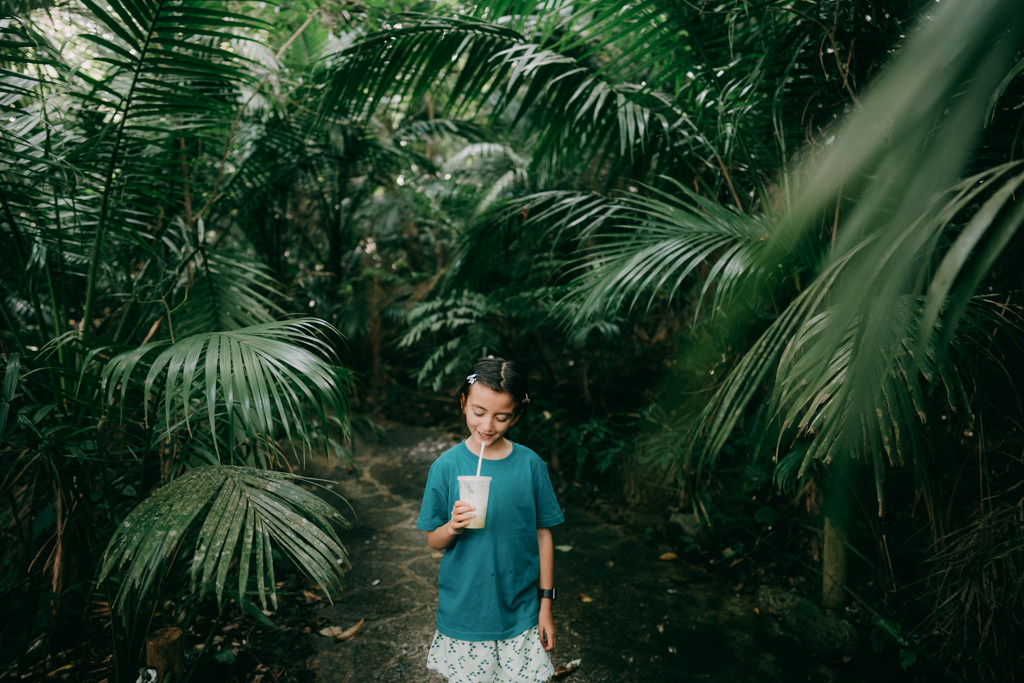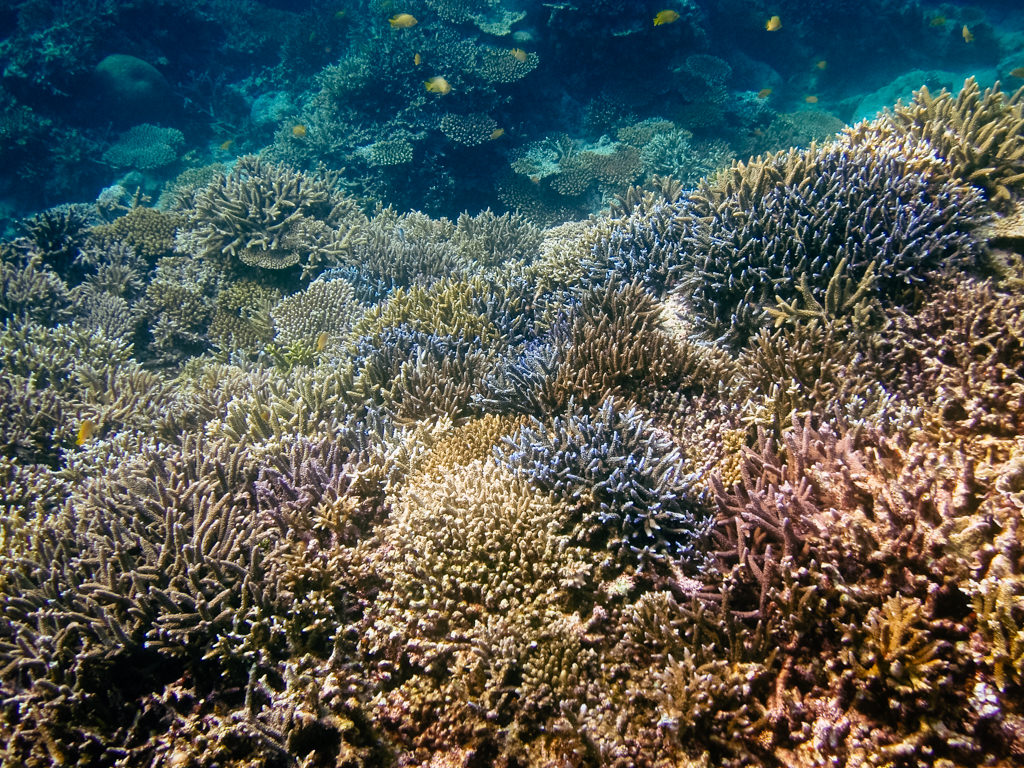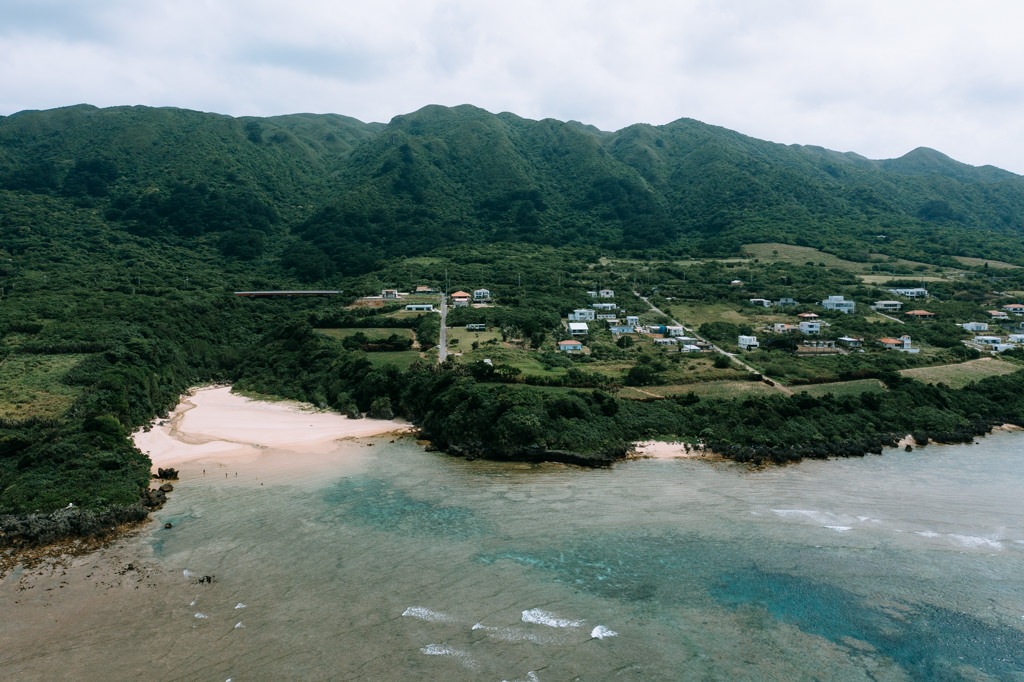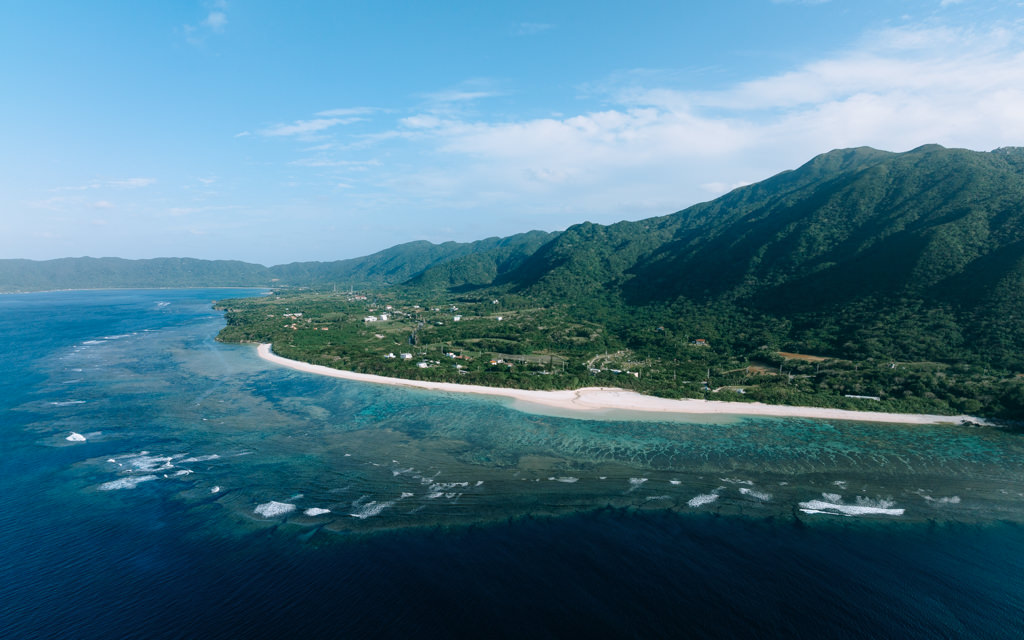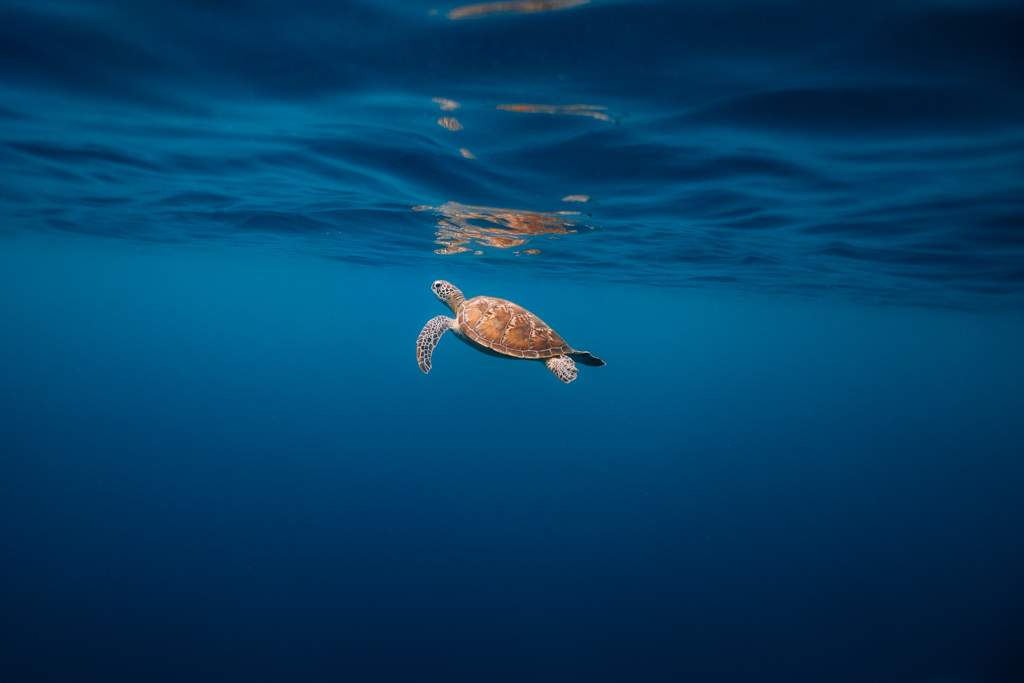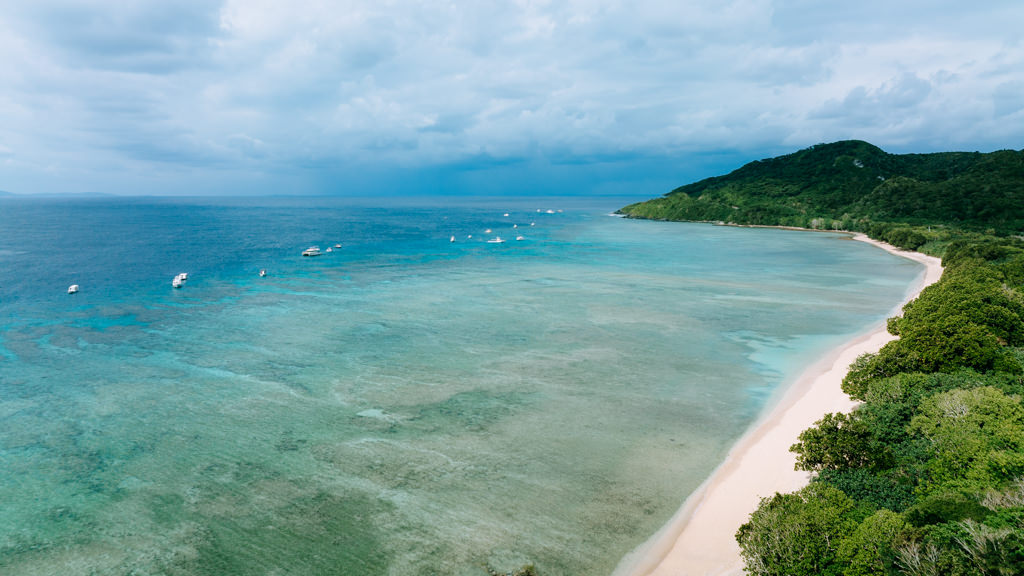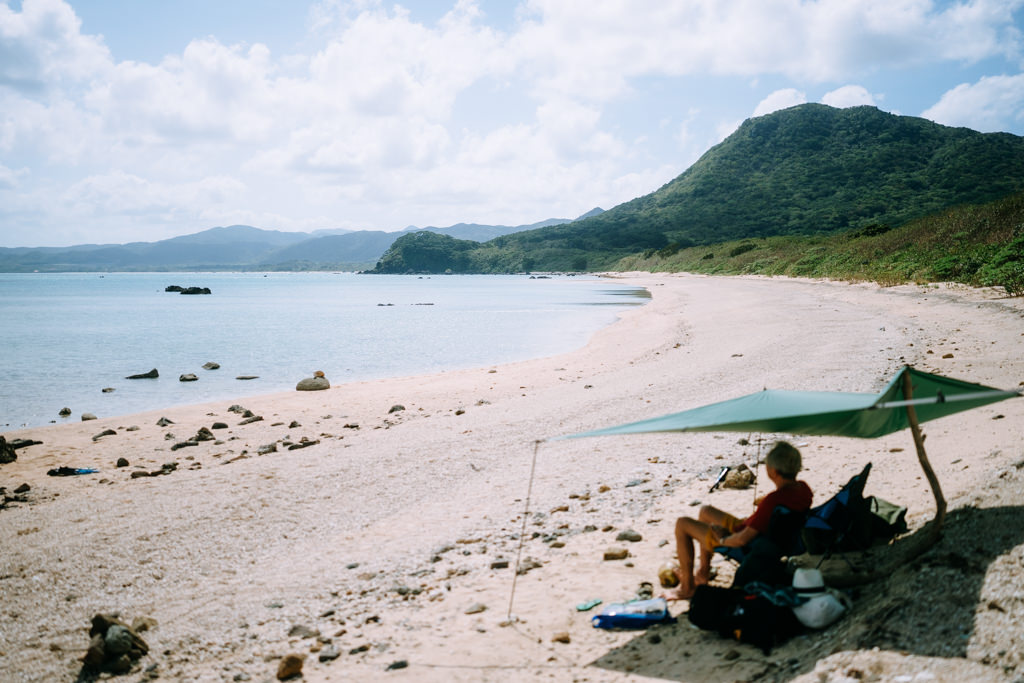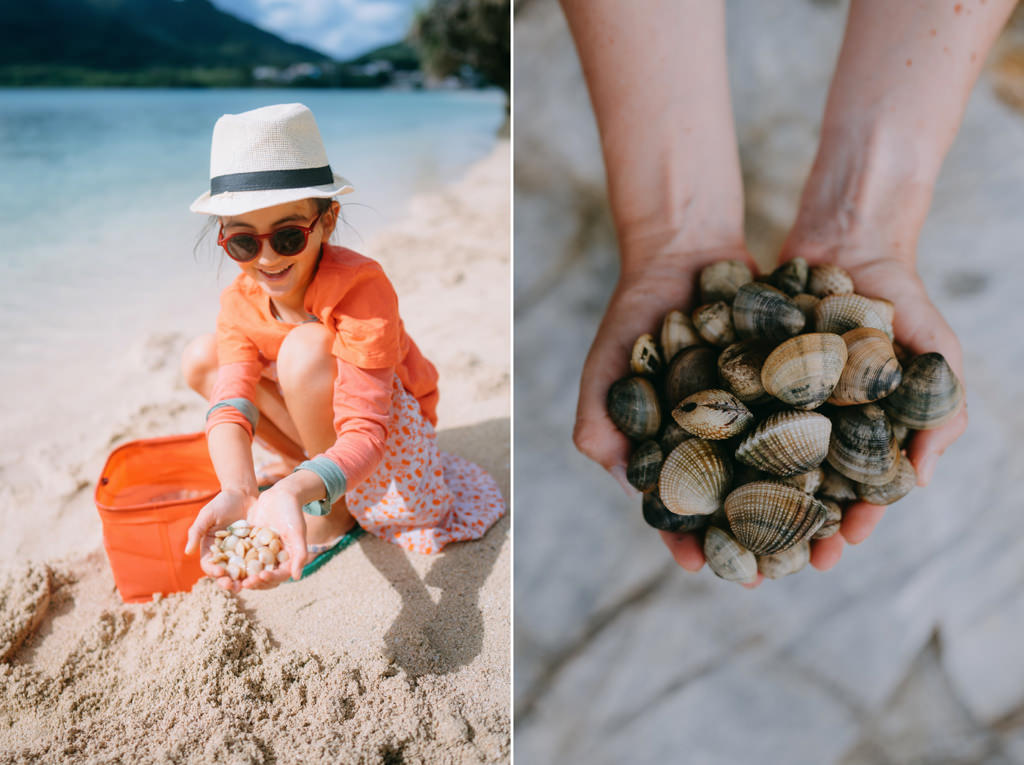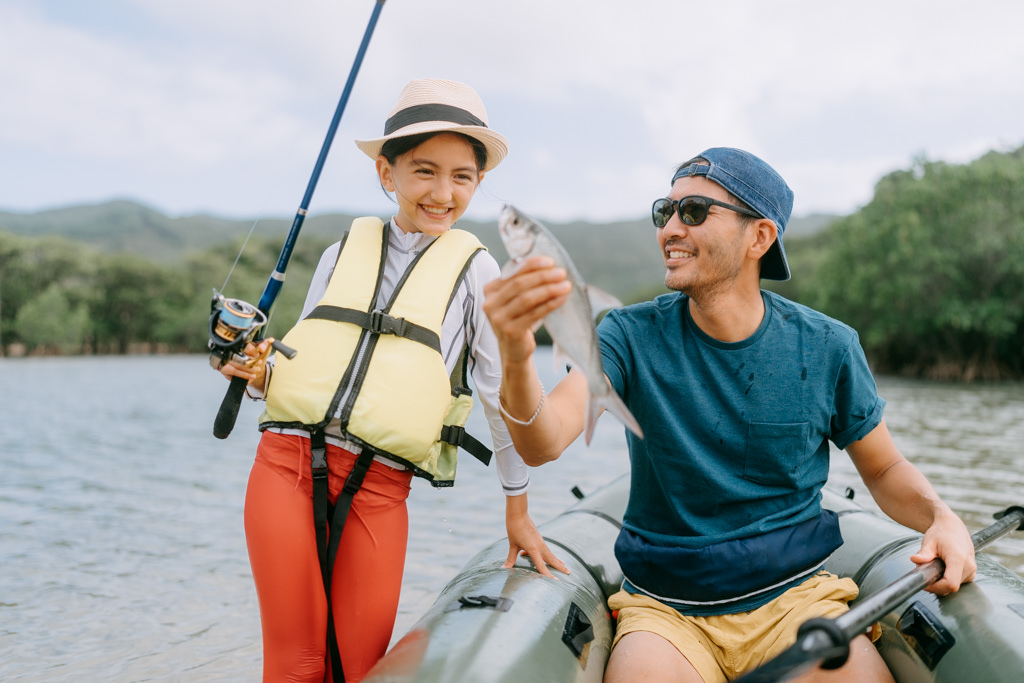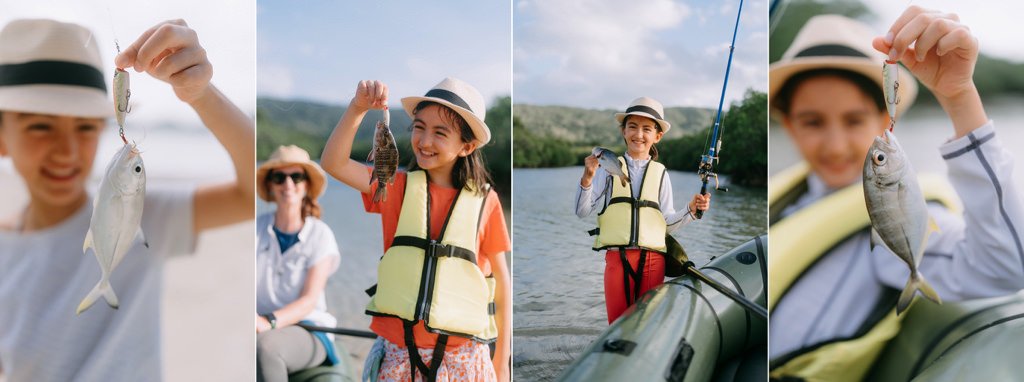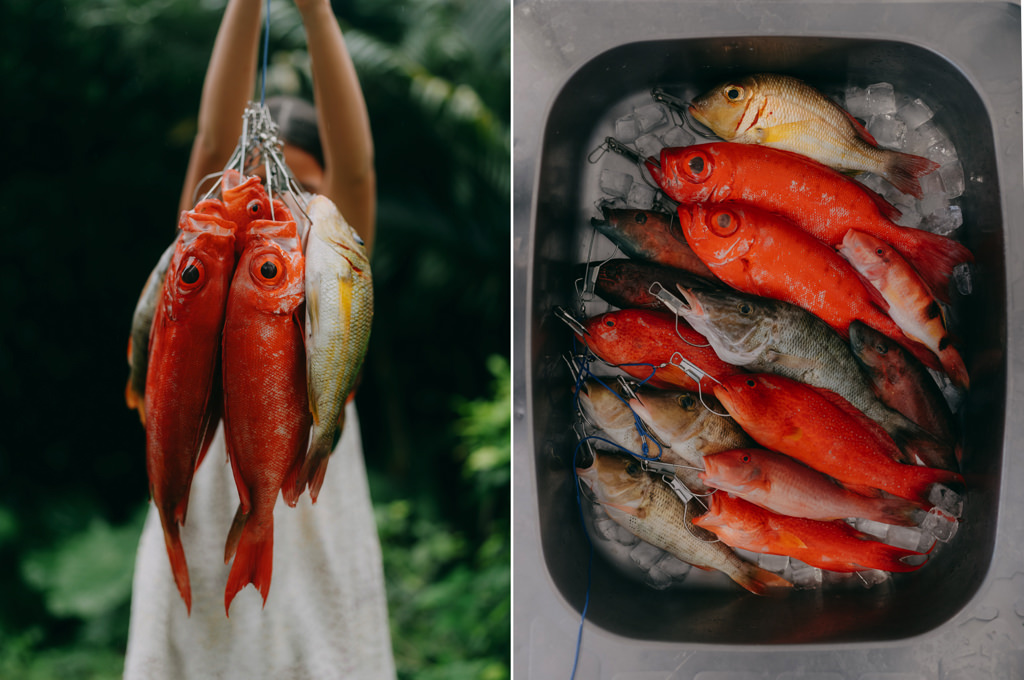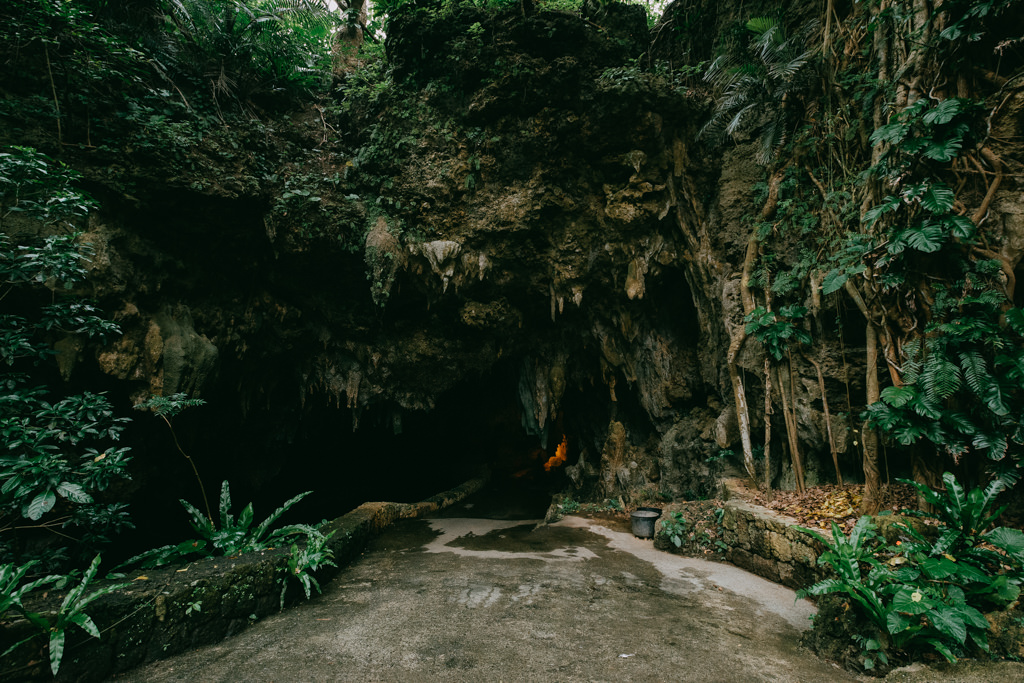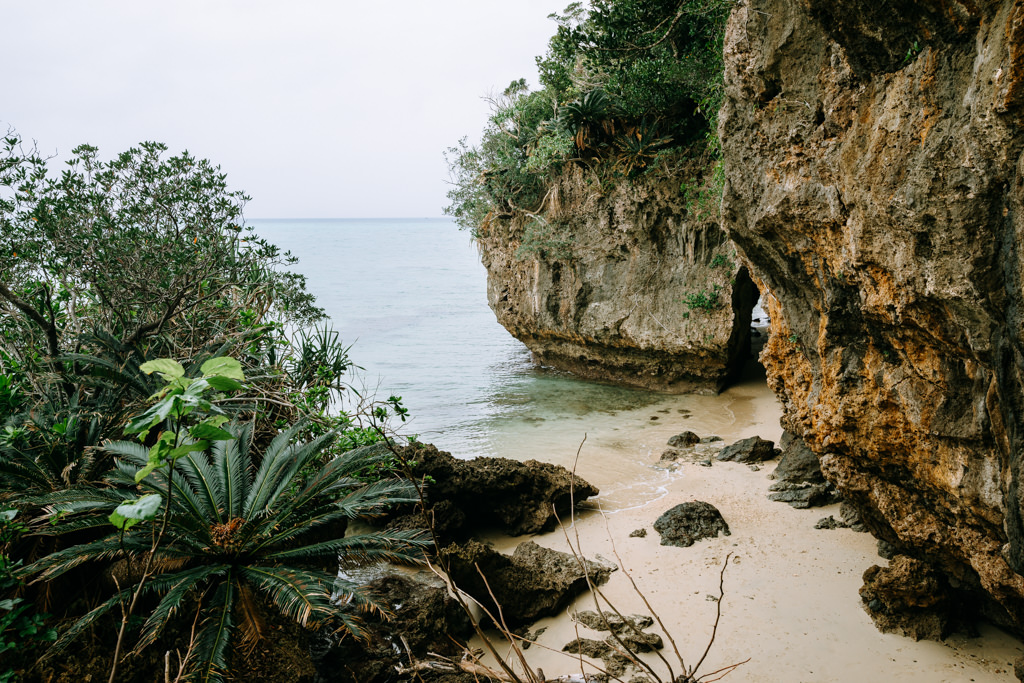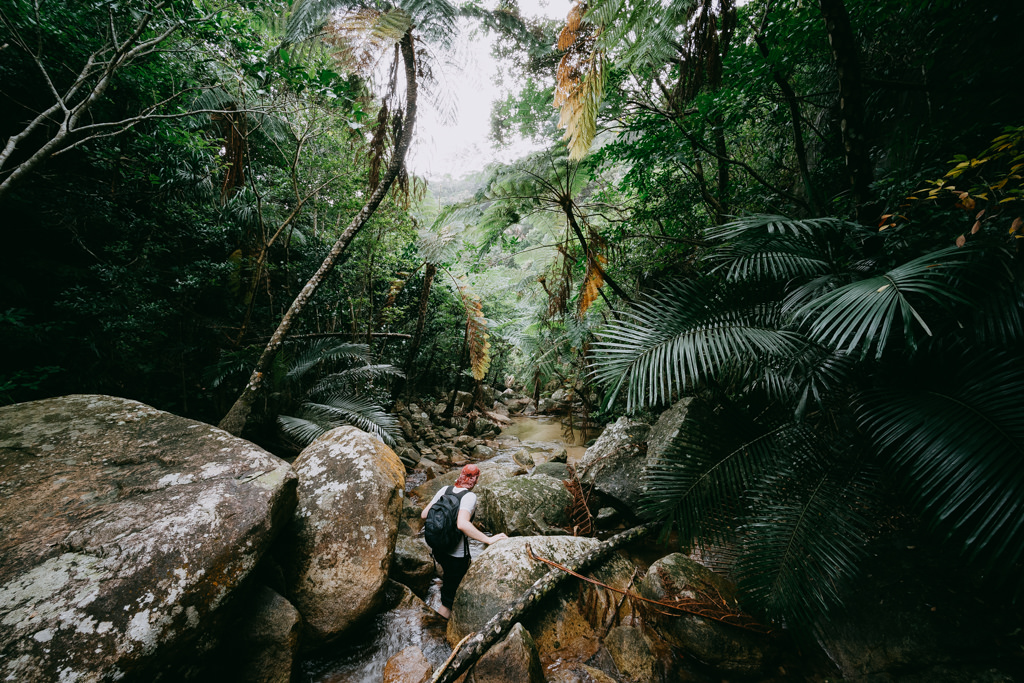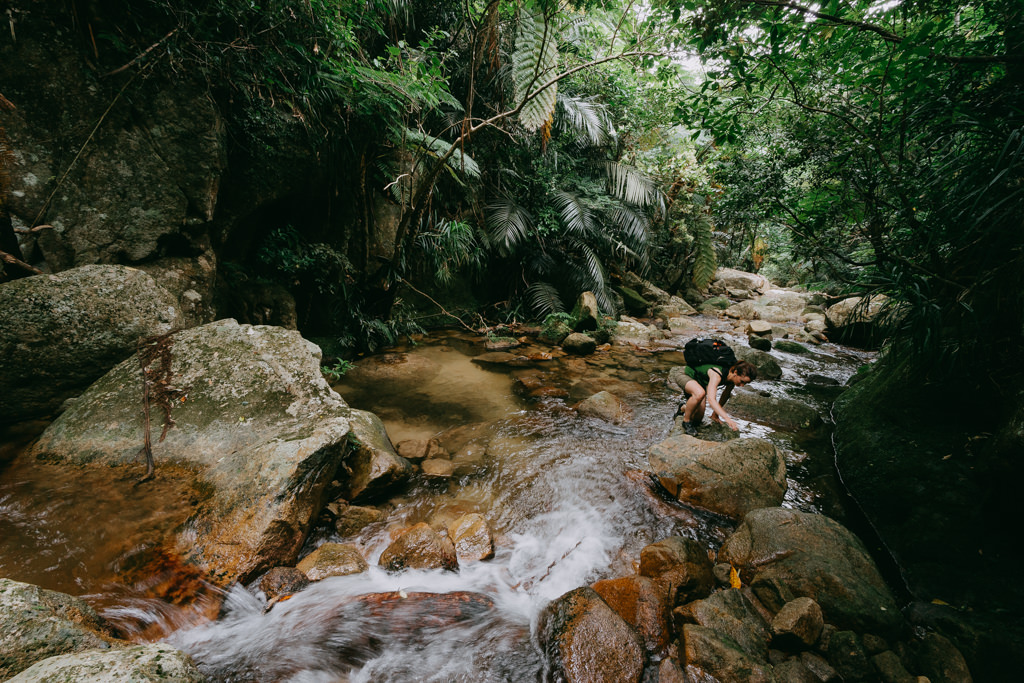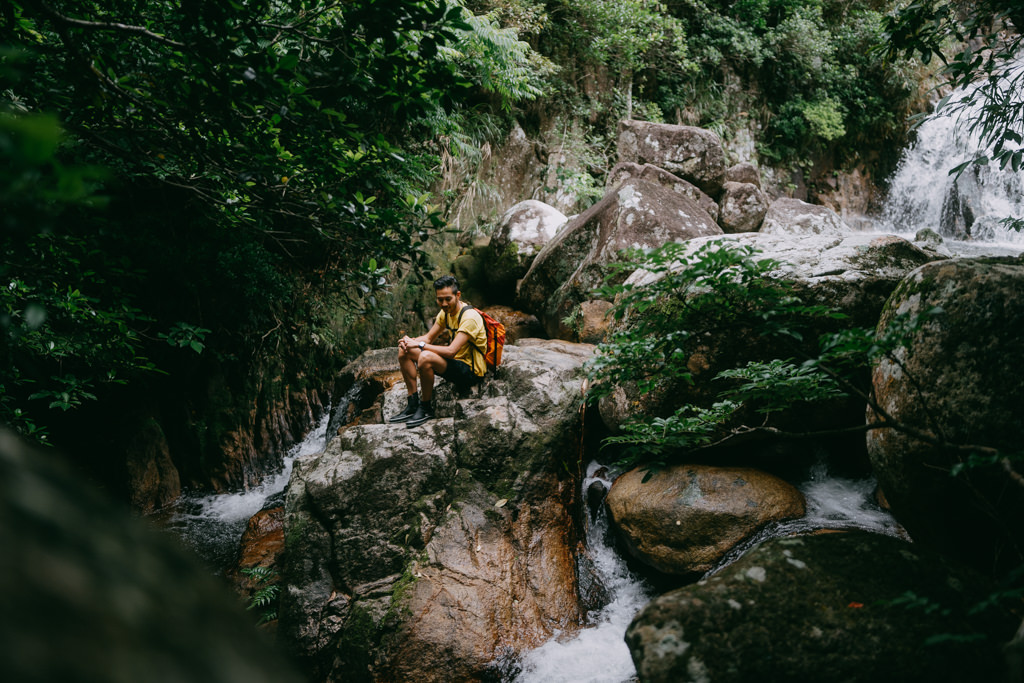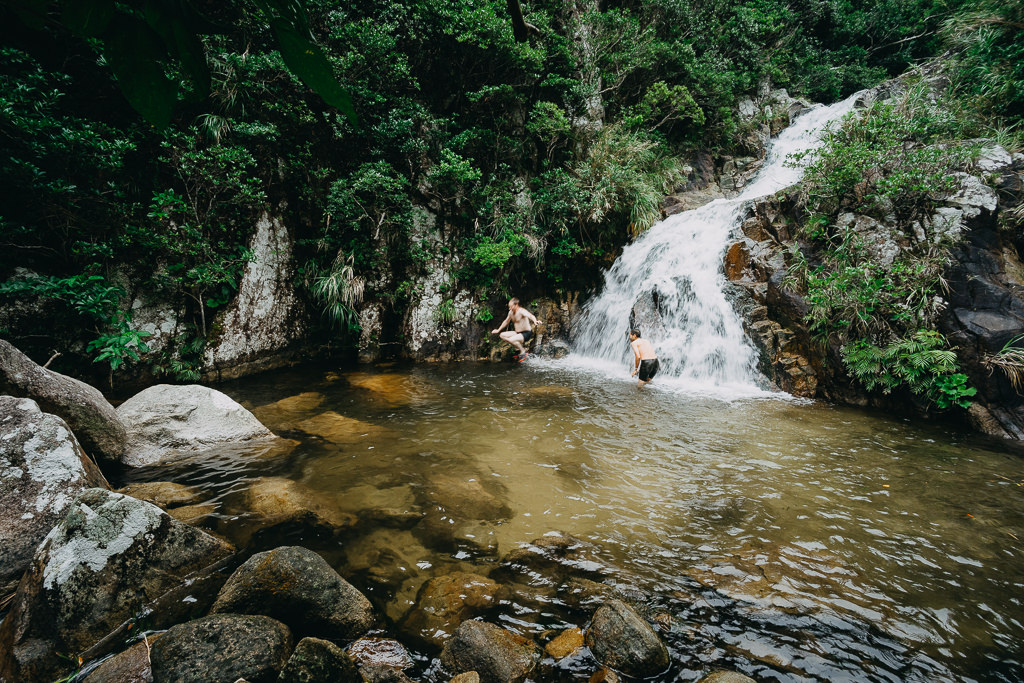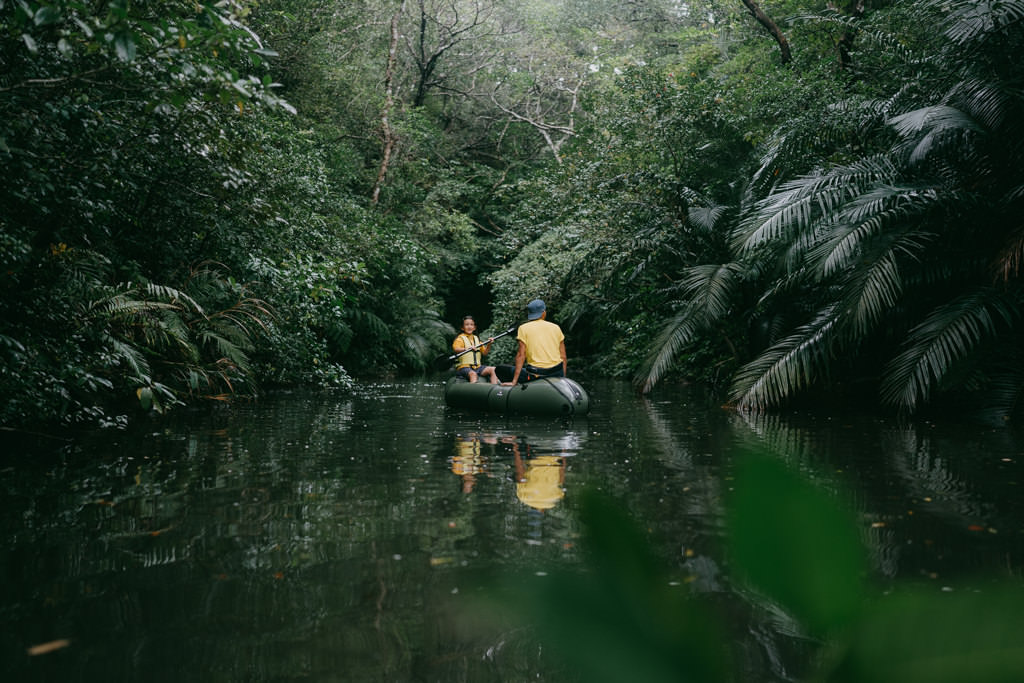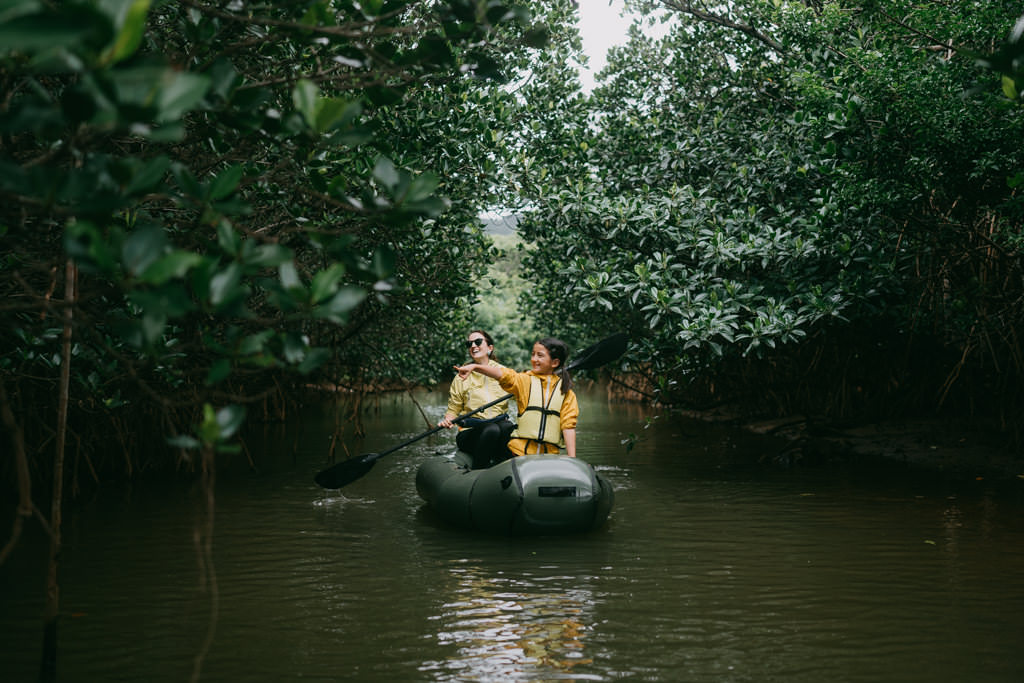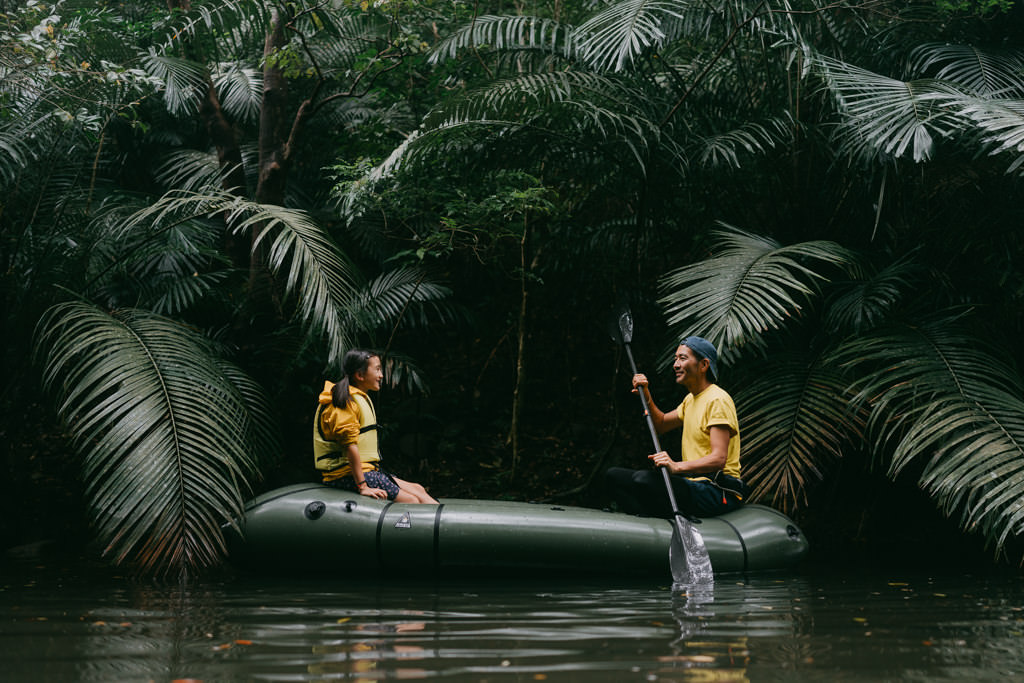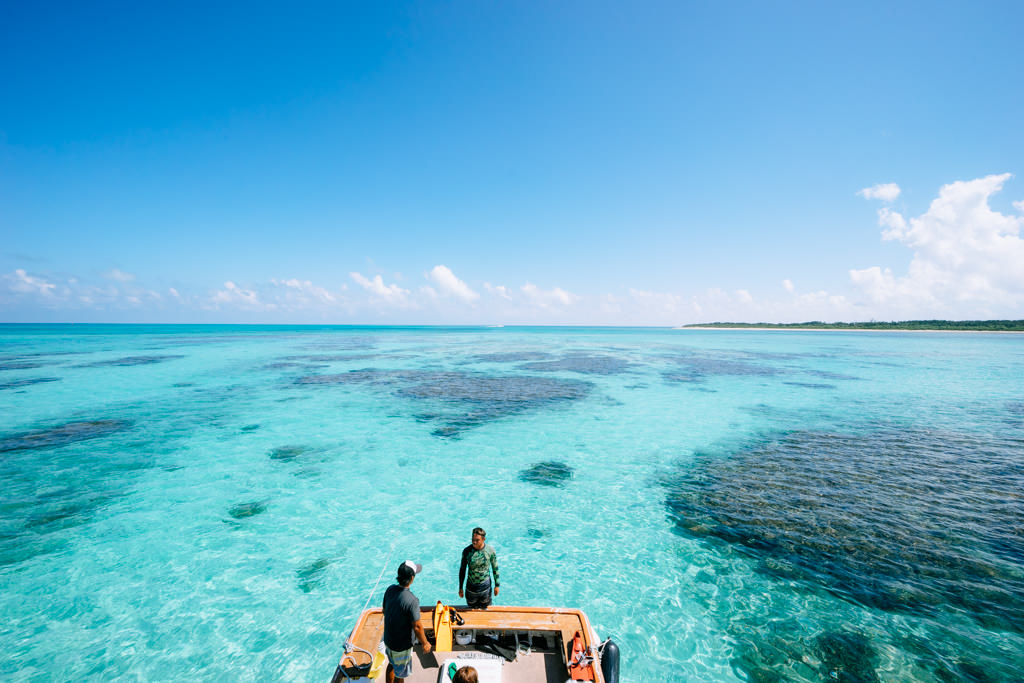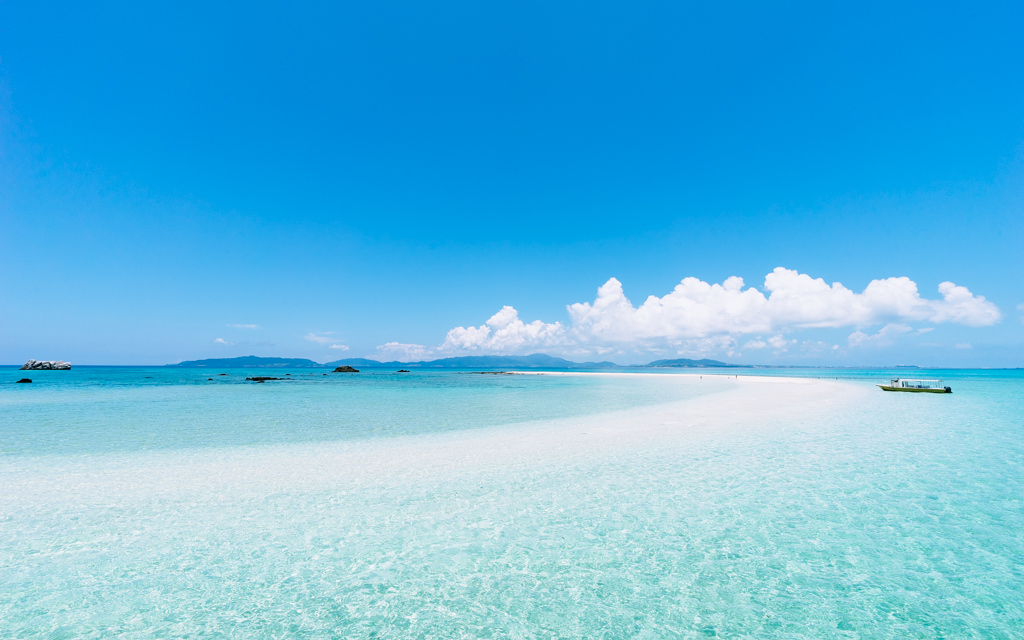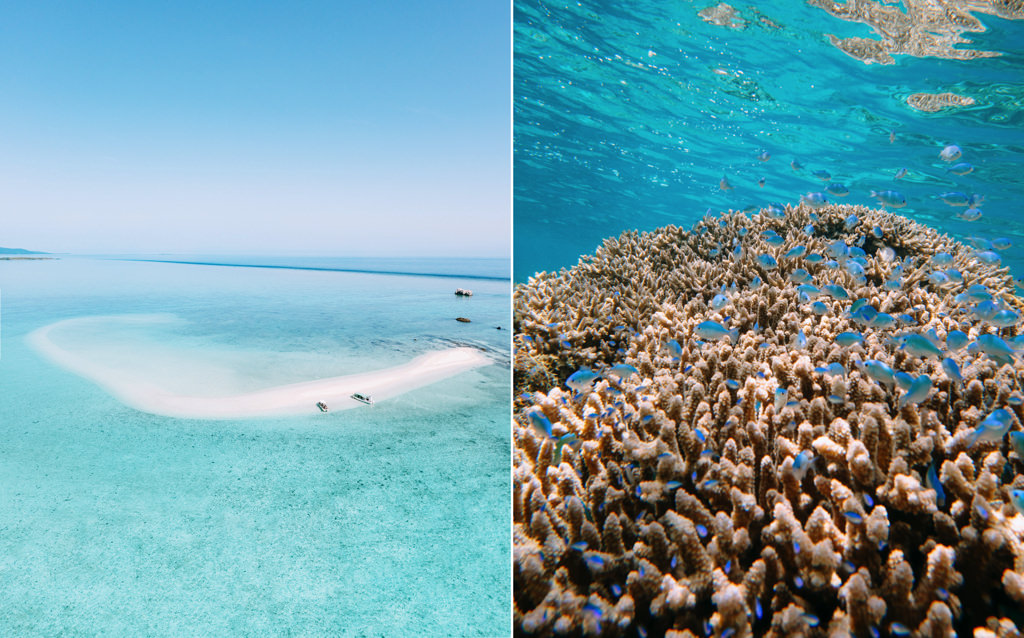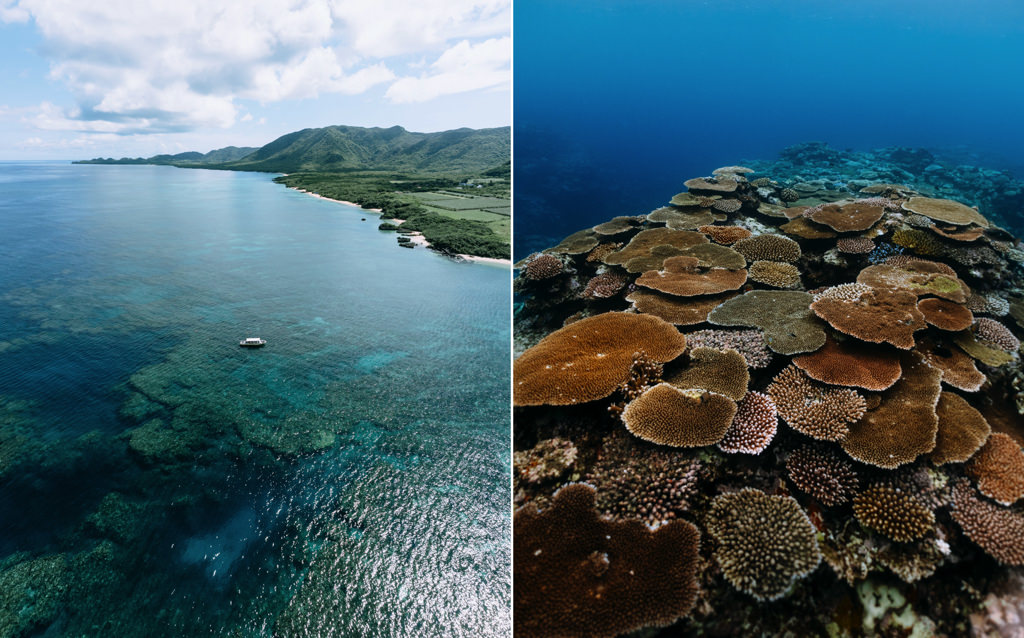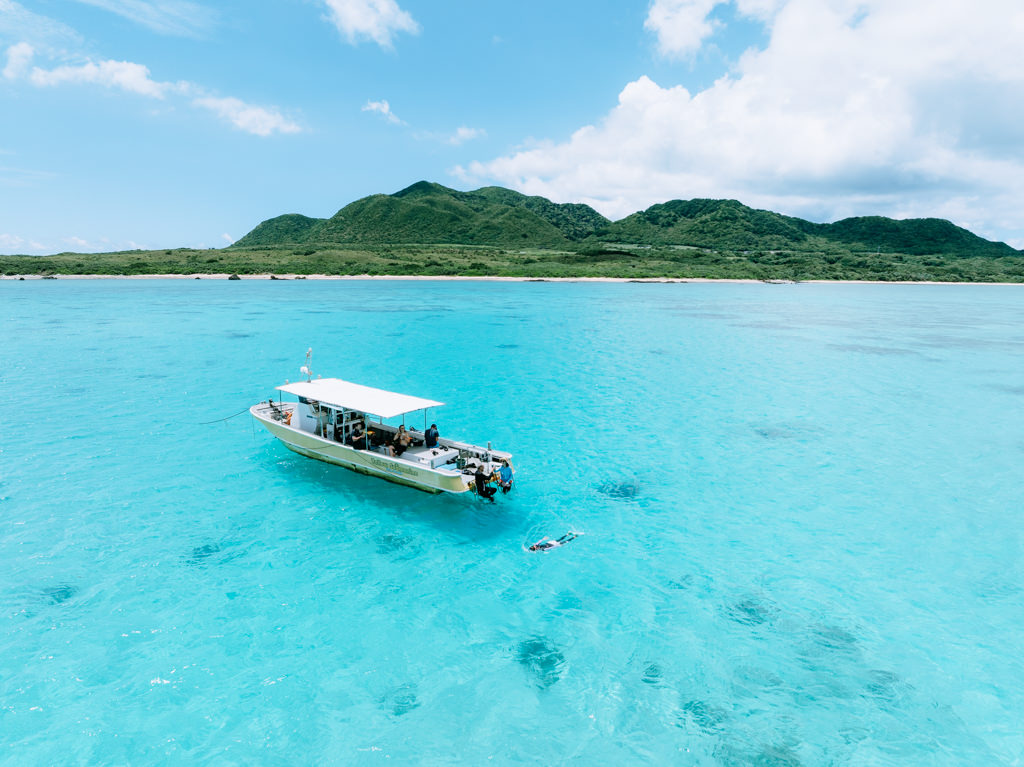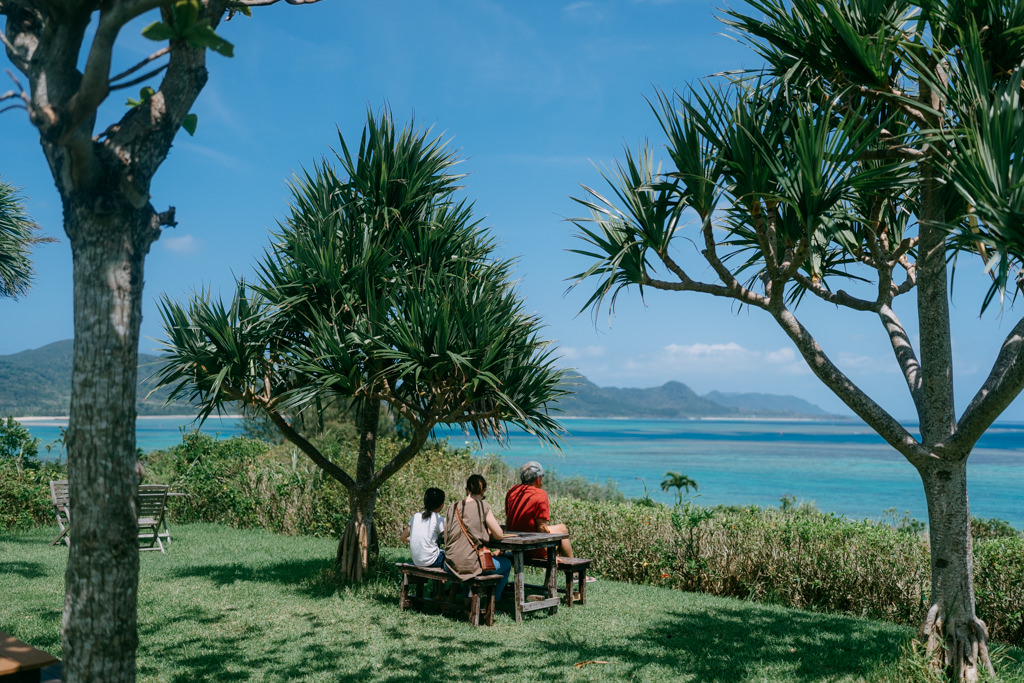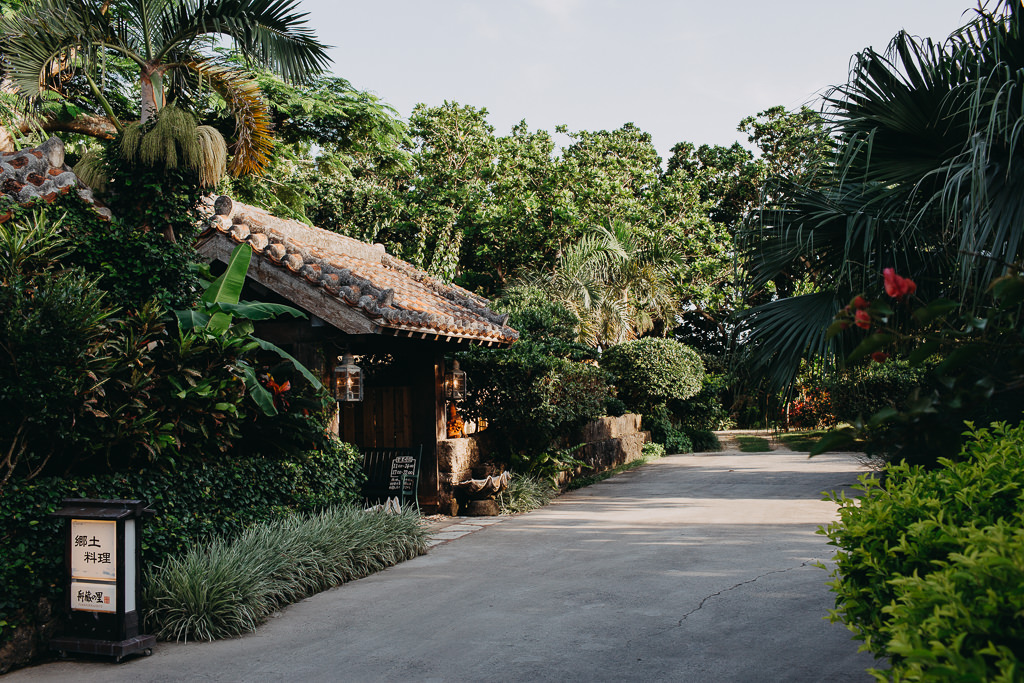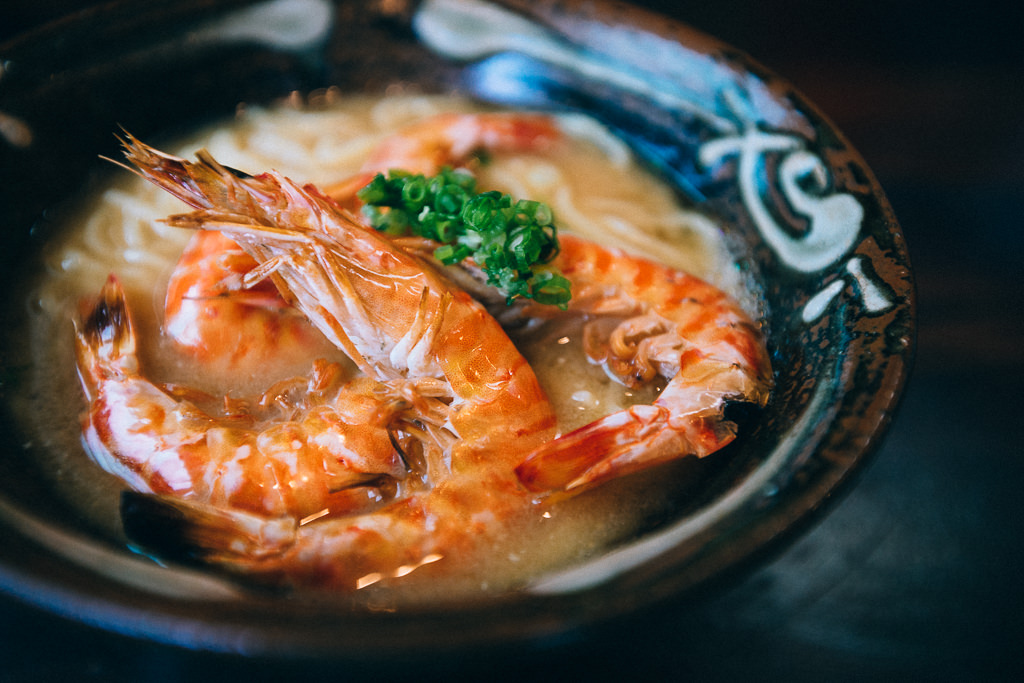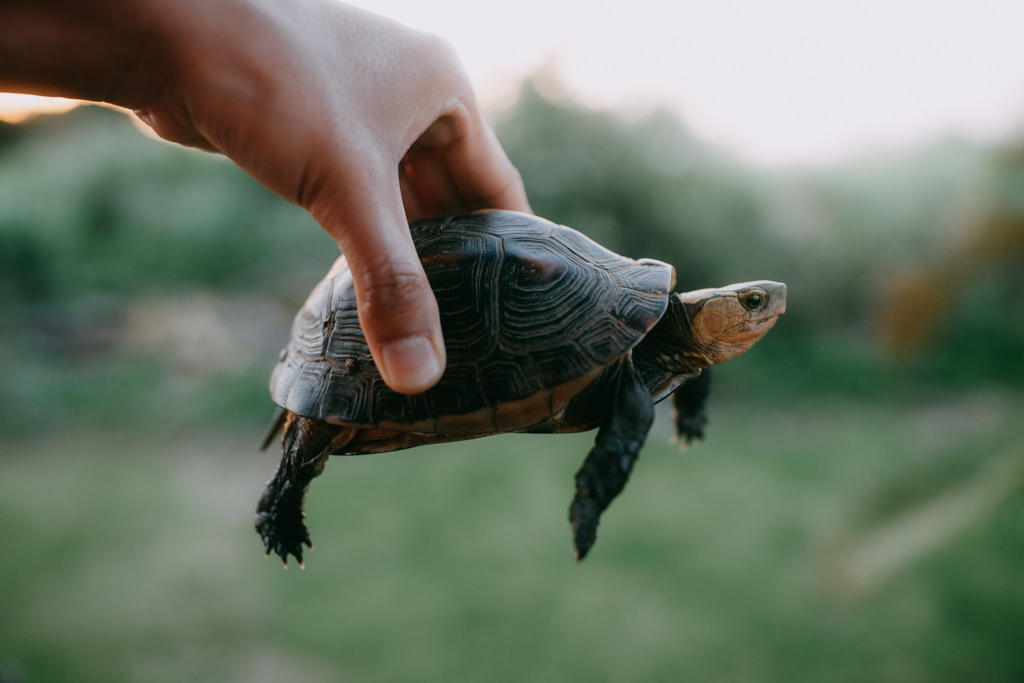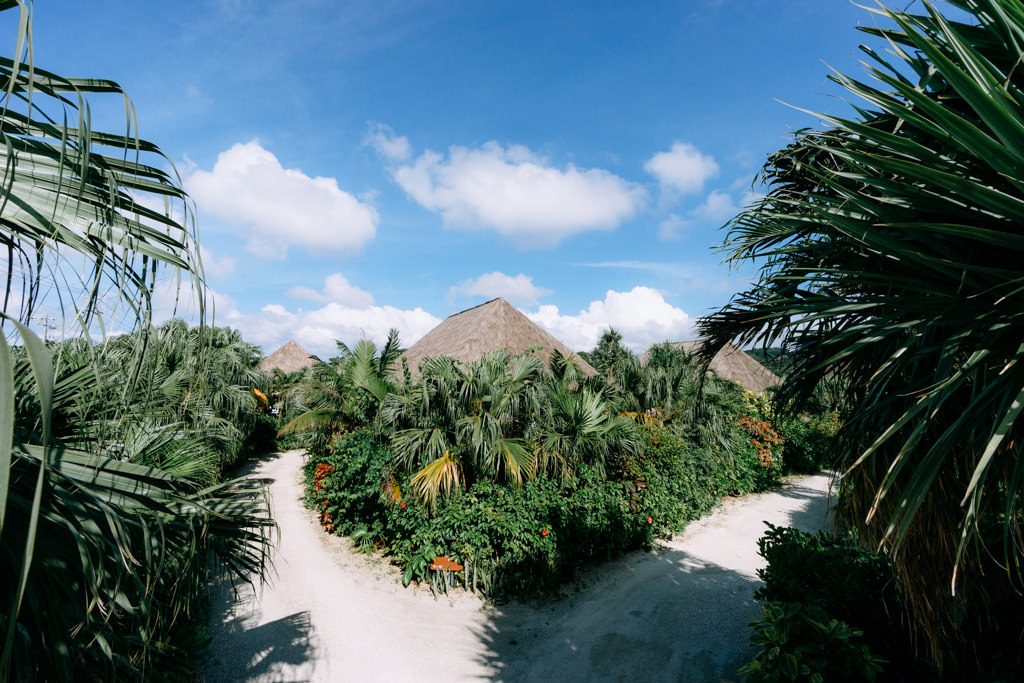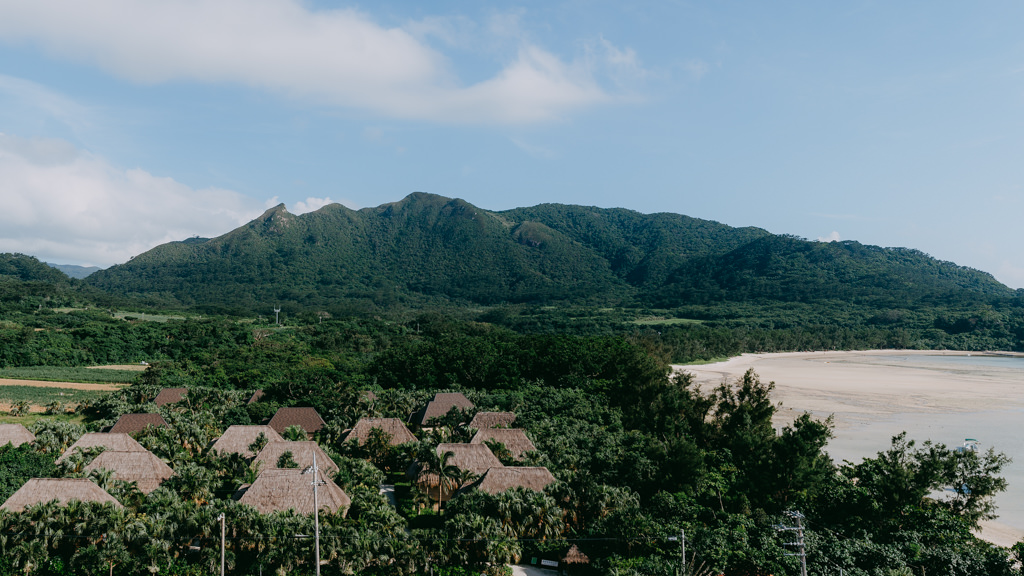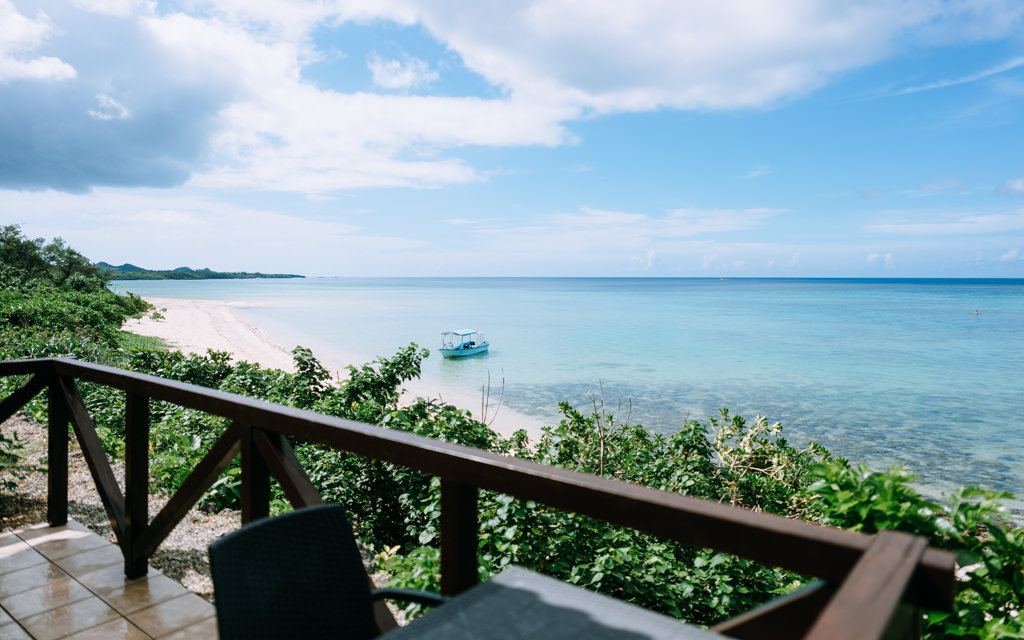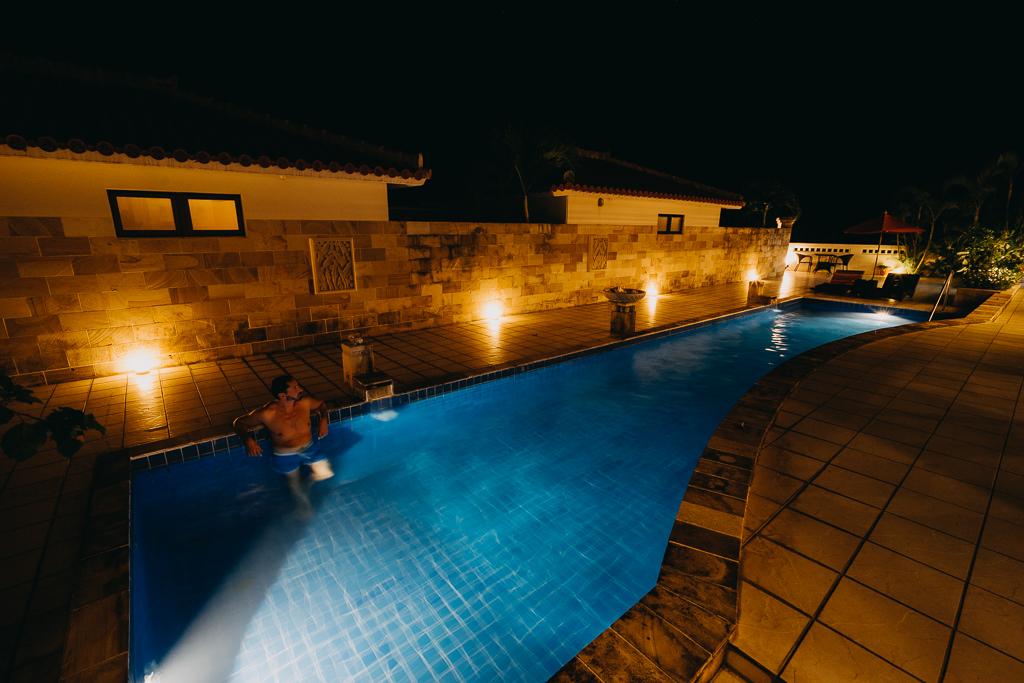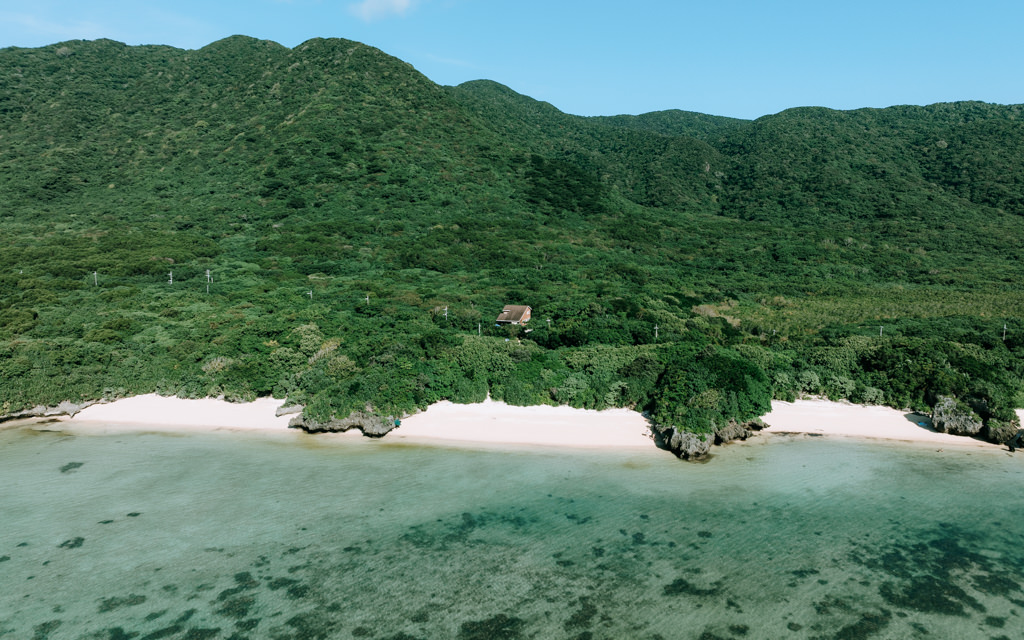Ishigaki Travel Guide & Tips | Things to Do on Ishigaki Island by Ippei & Janine
< Back to Ishigaki Island page
View Ishigaki Island tips map in a larger map
Ishigaki Island of the Yaeyama Islands
A picturesque grazing land for Ishigaki Gyu (Ishigaki Island Wagyu beef), and serving as a perfect hub for other neighbouring Yaeyama islands, Ishigaki Island (also known as Ishigaki-jima) offers pleasant beaches, colorful coral reefs, beautiful jungle and lush mangrove rivers, making it an easy getaway without giving up the conveniences of modernity.
The Yaeyama Islands are located near the Tropic of Cancer; more south than Taipei and closer to the northern islands of the Philippines than to Okinawa Main Island. If you like jungles as well as beaches, we highly recommend the Yaeyama Island group. The Yaeyama Islands are also perfect for snorkeling and scuba diving as they have one of the largest coral reef systems in Asia.
Over the last 15 years we’ve visited Ishigaki Island over 20 times, and we created this travel guide based on our experiences. Our Ishigaki Island travel guide is meant for nature lovers who wish to explore Ishigaki on their own without taking a guided tour. We regularly update this travel guide but please let us know if you spot any error or any outdated information.
Note: Please read here to find out about the best beach of the day, off-the-beach snorkeling and learn about the ocean garbage problem.
Kabira Bay Lookout Point
The Kabira Bay lookout point is a very touristy spot but a must-see place, even though it is prohibited to swim in this part of the bay (due to many tourist boats, strong current and mainly to protect the black pearls). The view is better in the afternoon due to sun’s reflection in the morning. It is also an excellent area for kayaking (required to launch your kayak away from the area where the tourist boats are docked).
Ura-Kabira (Kabira Bay Inner Beaches)
Not necessarily good for snorkeling (except for the areas around the rock islands for Nemo fish/clownfish/anemonefish), but they are certainly some of the most visually stunning beaches on Ishigaki, with sheltered calm tropical water and plenty of shaded spots under the trees. Due to the calmness of the water, this lagoon is a great place for packrafting/kayaking/SUPing. There are tasty wild coconuts growing on Kojima Island in the bay, which can quench your thirst if you are good at climbing trees.
If you are not bringing your own packraft/kayak/SUP, we highly recommend Kachibai for their SUP tours.
Fukido Mangrove River Kayaking
If you are not going to Iriomote Island but still want to experience the jungle by kayak, we’d recommend Fukido River. If you can’t bring your own packraft/kayak/SUP, the best tour is the “Mangrove kayaking & waterfall stream-trekking” (6,000 yen) operated by Fukido Kanko. The tour includes everything you need.
For those who bring their own packraft, Ishigaki has more than a few beautiful mangrove rivers to explore, such as Hirakubo River, Miyara River, Todoroki River, Kara River, Toro River, etc (see our map).
The waterfall is also accessible on foot (see “Waterfall in upper stream of Fukido River” on our map).
Note: Malaria on the Yaeyama Islands was eliminated in the 1970’s but there are still mosquitoes that carry Japanese Encephalitis even though there is no more outbreak since the 1960’s (Only 1 out of every 1,000 infected people develop symptoms in Japan nowadays), it’s best to use insect repellent if your adventure team includes an infant or elderly person just to be sure since most westerners don’t have the vaccination.
Kabira Ishizaki Manta Scramble
Ishigaki boasts a very high chance of encountering giant manta rays while scuba diving at the point called Kabira Ishizaki Manta Scramble. There are also snorkeling tours to see manta rays but we must say that it’s often boring for snorkelers. The point does not have beautiful coral reefs and it’s too deep for snorkelers to enjoy (even if you can see manta rays, usually you see them small from the surface).
Beautiful Landscape of Northern Ishigaki
Northern tip of Ishigaki seen from a plane (pick a seat on the right side of the plane for the view when flying from Mainland Japan):
Tamatorizaki Observatory:
Akaishi Paraglider Take-Off Site:
Cape Hirakubozaki Lighthouse:
Northwestern Coast of Ishigaki, seen from Kabira Bay:
Kabira Ishizaki and the fringing reef:
Ibaruma and the fringing reef:
Ibaruma seen from the north (left) and Hirakubo (right):
Kabira Tabaga Beach:
Find your own secluded beach just for yourself!
Ishigaki has more than 50 idyllic nameless small cove beaches, which are often deserted even during peak seasons. Some of them are easily accessible from the road side without having to use a kayak. Use Google Satellite and find your own secluded beach, keeping in mind the wind direction of the day. You can find some examples on our Ishigaki map. If you are not bringing your own packraft with you to Ishigaki, but still want to check out secluded wild beaches that are not accessible by land, we highly recommend taking a trip by Sabani boat (traditional Okinawan sailing boat) with Yoshida Sabani. Every island in Okinawa Prefecture has its own unique feature of Sabani boat, and Yoshida Sabani builds the traditional Ishigaki style Sabani boats with locally sourced timber. Today there are only a handful of people who can build Sabani boats in the truly traditional way (without using any nails) in Okinawa Prefecture.
Yaeyama Palm Tree Grove and Juice Bar with Ishigaki’s Tropical Fruits
Yaeyama palm trees (Satake palm) are endemic to Iriomote Island and Ishigaki Island. They are beautiful palms which have been introduced to Hawaii and Southern Florida. This area is protected so you can only enter a small part of the mountain, but even this small boardwalk area is beautiful. There is a juice bar next to the parking area where you can enjoy various local tropical fruit juices such as mango, guava, pineapple, dragon fruit, passionfruit, shikwasa (Okinawa lime), etc., mixed with freshly squeezed (single-pressed) sugarcane. Our personal favourites are guava, Blend A (shikwasa + pineapple) and Blend B (mango + pineapple). We also recommend the simplicity and total deliciousness of fresh sugarcane juice which is full of vitamins and minerals. As opposed to many other countries, sugarcane are pressed only one time for its juice in southern Japan, which gives more flavor rather than just sweetness. There is Satake Palm Memorial Museum within a 5 minute walk from the juice bar. You can have a panoramic view of these Yaeyama palm trees and the outer reef of Yonehara from the rooftop of the museum.
Off-the-Beach Snorkeling
With any off-the-beach snorkeling over fringing coral reefs, it’s important to snorkel around high tide in order to protect coral from breaking with fins, or stepping on coral accidentally. Also it can be dangerous as sharp coral can cut you. Please check Ishigaki’s tidal hours of the day here.
For easy off-the-beach snorkeling for families, we recommend dipping into the water from Yonehara Beach (especially at the southern end of the beach), Akaishi Beach or this special snorkeling spot off Crystal Beach where you can see beautiful coral, many tropical fish, sea-snakes, etc. To see the amazing coral at the special spot, you have to swim about 10-15 minutes from the beach to get to the reef edge. It’s close to the beach but you need to swim over a big drop (see the exact spot on our map). Even though Yonehara Beach is a touristy snorkeling spot suitable for families, snorkeling is actually not bad even for snorkeling enthusiasts, and you can see beautiful coral if you swim further to the reef edge. Akaishi Beach has beautiful Blue Coral just in front of the beach, often with no other people (see the exact spot on our map). The road to Akaishi Beach is blocked with a gate but the gate is just to keep the cows inside the grazing land so you can open the gate to enter. Just make sure to close the gate behind you!
There is a 99% chance that you can swim with sea turtles at the reef edge near the famous Blue Cave (see the exact spot on our map). However, this is not where active sea turtles feed on grass, but it is where they sleep between the rocks/coral on the reef edge. If you can wait, you can see them coming up to the surface to breathe. You can also see many kinds of colorful tropical fish as well as some beautiful corals at this point. Due to the direct northerly aspect, it has to be on a still day or a day with a south wind. This reef edge gets too rough to snorkel with a north wind. Also you should aim for high tide as it gets too shallow to swim to and from the reef edge. We advise not to walk on the reef as corals get damaged, especially on the west side when reaching from Minato Beach. Many of Ishigaki’s popular Blue Cave tours also take their customers to this point to see sea turtles. However they all tend to stay on the east side of the reef where it’s safe to walk at low tide.
In order to have good water clarity with calm water, it’s wise to choose the snorkeling spot according to the wind direction of the day. For example, when it’s a north/west wind, Akaishi will have good clarity, while in case of a south/east wind, Yonehara or our special snorkeling spot off Crystal Beach will have good clarity. In case of a south wind, the reef edge off the Blue Cave is highly recommended. In case of a northeast wind, we recommend Osaki Beach if you have long fins.
Crystal Beach and the snorkeling spot (the bottom right of the photo):
Yonehara Beach and its fringing reef seen from above:
Off-the-beach snorkeling with sea turtles near the Blue Cave:
In case of a northeast wind, Osaki Beach is the most calm beach on Ishigaki as it’s completely protected from the wind. For this reason, it’s a popular spot for off-the-beach snorkeling and scuba diving during winter (when a northeast wind is common). Osaki Beach is also a good place for sunbathing during winter as it feels a lot warmer than other beaches on those winter days without the wind coming in.
We wouldn’t recommend this one as a snorkeling beach for families with small children since the snorkeling points are around the reef edge, which is about 200m from the beach. Many experienced snorkelers and scuba divers walk from the beach to the reef edge at low tide and then jump into the water (there are no coral in the lagoon here, while in most other lagoons on Ishigaki it is best NOT to walk as any coral would be destroyed). A snorkeling tour by boat is recommended for this spot for families with small children.
In case of a north or west wind, Tamatorizaki South Beach is a good option even though there isn’t much coral inside the lagoon but it’s usually deserted and very peaceful. You can also enjoy snorkeling over the coral reef, which is quite far for swimming but easily accessible by packraft/kayak/SUP. Best to aim for high tide and bring your own shade!
Drone’s eye view of Osaki Beach:
Tamatorizaki South Beach:
Clam Digging
Check the tides! If your visit coincides with a time when there is a low tide during the day around the time of a full moon, unfortunately it’s difficult to do off-the-beach snorkeling as the water level will be extremely low (bad for the coral and bad for you if you insist on snorkeling off the beaches). However, such a condition is ideal for activities like clam digging. This is a great activity for families with small children. They are delicious for making a soup or stir frying with vegetables!
Fishing with Kids
Something we particularly love doing on cloudy days is fishing. We love throwing a line in from beaches, as well as from our packraft while paddling through mangrove rivers. With our out-of-control casting young daughter, we find that popper lures are best as they float on the water surface and don’t get caught in coral or mangrove roots. With some exceptions, a lot of fish from these warm coral waters often lack in flavor, but it’s a fun family activity. We always release the small ones so they have a chance to grow — so we can catch them next time!
If you want to do fishing with children from a boat which goes outside the coral reef, our recommendation is this half-day fishing tour.
Ibaruma Sabichi Cave
Particularly if it’s a rainy day or typhoon day, visit Ibaruma Sabichi Cave located in the north of Ishigaki. This cave is connected to some secluded beaches which are also nice to explore. There are several cave systems all over Ishigaki, however we thought this Ibaruma Sabichi Cave was much better than the LED-lit caves closer to the port.
Stream-Trekking to the Upper Waterfall of Arakawa Falls
If you are not going to Iriomote Island but still want to experience the jungle by stream-trekking, we’d recommend the stream to the upper waterfall of Arakawa Falls. As you hike up this rugged stream, it becomes surrounded by beautiful tree ferns. There is a car park by the road. Check the description on our map for the entry point as it’s different from the lower waterfall of Arakawa Falls, which is popular among local kids. This stream-trek takes less than one hour to get to the upper waterfall. Stream-trekking shoes (neoprene felt-sole wading boots) are highly recommended since you need to go over slippery mossy boulders. It is also a very good stream to catch delicious freshwater prawns all year round!
Explore the rivers of Ishigaki on your own
Ishigaki has many beautiful mangrove and jungle rivers to explore for those who can bring their own packraft/kayak/SUP.
Snorkeling Tours to Sekisei Lagoon, Coral Reefs of Northern Ishigaki and Shiraho Coral Reef
We recommend a half-day or whole-day snorkeling tour to Sekisei Lagoon. Some areas are still beautiful, but a lot of coral in the shallow areas got damaged by 2015-2016’s El Nino. Some have started to recover, but it will take time. For those who want to see pristine lush coral reefs, we highly recommend taking a snorkeling tour to the coral reefs off northern Ishigaki or the coral reefs around Hatoma Island. Our recommendations for off-the-boat snorkeling tours from Ishigaki are Undoya and Yellow Submarine. They run snorkeling tours to healthy lush coral reefs with a very good chance of seeing sea turtles or even manta rays, depending on the condition of the day.
Shiraho Coral Reef (along the southeast coast of Ishigaki Island) is also highly recommended for snorkeling as it’s internationally acknowledged as the world’s largest colony of Blue Coral, and Shiraho Coral Reef alone has over 130 coral species (out of over 360 coral species seen around the Yaeyama Islands), according to WWF’s Shiraho Coral Reef Conservation Centre. Even though Shiraho Coral Reef is accessible from the beach with a bit of swimming, off-the-beach snorkeling is prohibited in order to protect coral, so you need to take a boat or paddle a packraft/kayak/SUP to the reef. We recommend a 1.5 hour snorkeling boat tour run by Blue Coral.
Off-the-Boat Snorkeling in the Far North
If you are staying in the far north and don’t want to spend 40-60 mins driving to Shiraho or the main port for snorkeling tours by boat, we highly recommend the tours by Yellow Submarine who discovered the world’s largest colony of cabbage coral off the northern coast of Ishigaki. Their boat leaves from Funakoshi Port in the Ibaruma Bay.
Restaurants and Cafes
There are more and more cute restaurants and cafes popping up all over Ishigaki.
Some of our favorites include (see the exact spots on our map):
Uliuli Cafe
This cafe is located in the north. They serve a delicious 100% Ishigaki beef burger on their lunch menu. Closed on Thursdays and Fridays.
https://uliuli.ti-da.net
Nobare Cafe
This cafe is located near Cape Noharazaki, and is run by farmers. It has a limited but reasonably priced and delicious menu, and has a beautiful tropical garden overlooking the Pacific side of Ishigaki. On a nice day, it is great to grab a shaded table and enjoy the view while having lunch or sweets.
Funakura no Sato
Traditional Okinawan restaurant located in a previously private residence, spread over different houses and rooms. The premise is absolutely beautiful. The food is decent traditional Okinawan dishes best to share, and there is a Sanshin (Okinawan guitar) performance which is a lot of fun. Even though it’s a bit touristy, it’s a great place to experience the island culture. It’s essential to make a reservation.
http://www.funakuranosato.com/
High Tide Cafe
This cafe is located in a residential area in-between Kabira Bay and Ishigaki Port. Delicious and beautifully prepared food, using only local ingredients. The coffee & sweets set is delicious and great value. This cafe features the illustrations of Murakami Yasunari and has a museum of his work.
Vietnamese Restaurant Ishigaki Shoten
Delicious Vietnamese food with a local touch, located near the Kabira area. The restaurant has a casual atmosphere. Takaway is also possible. Currently only for lunch (11:00-16:00).
Kabira Tei (formerly Setsukanchi)
Okinawan izakaya with a lot of smoked dishes, located in the Kabira area.
Arioru Cafe
Cafe/bar/restaurant open from 9:00-22:00. It’s very handy for those who are renting a cottage in the Nosoko area and want to have a break from cooking or want to go out for drinks. They also run a guesthouse and Sabani (traditional sailing boat) tours.
https://arioru.com/
Akaishi Shokudo
No-frills place serving one of the best, authentic Soki Soba dishes on Ishigaki.
Mirumiru Honpo
Located a short drive north/west of the port, in the middle of a field, this flagship gelato shop boasts gelato made with local produce such as mango, pineapple, banana, dragonfruit, shikuwasa lime, purple sweet potato.
http://mirumiru-honpo.com
Kanan
Located in the center of the island, Kanan is a great lunch place with traditional local dishes. It’s also popular amongst local islanders.
Tofu Higa
Loacted near the port, this is a very popular place for a traditional breakfast with freshly made Okinawan-style tofu. It gets quite busy even early in the morning during peak seasons, and all the dishes tend to get sold out before noon.
Papaya (the best tropical fruit juice stand by the Yaeyama palm tree grove in Yonehara)
Ok, it’s not a “cafe” or “restaurant” but it is worth a mention to get the best juices on the island! Enjoy various local tropical fruit juices such as mango, guava, pineapple, dragon fruit, passionfruit, shikwasa, etc. Our personal favourites are guava, Blend A (shikwasa + pineapple) and Blend B (mango + pineapple). We also recommend the simplicity and total deliciousness of fresh sugarcane juice (pressed only once) which is full of vitamins and minerals.
Yaimamura (inside Ishigaki Airport)
Despite being a food court style restaurant at the airport, the Soki soba (Okinawan noodle soup with pork ribs) of Yaimamura is highly regarded as one of the best on the island. We never miss a meal of Yaimamura Soki soba before leaving the island!
Kato Soba
Delicious home-made Okinawan-style soba restaurant, famous for their soba with “Ishigaki Kuruma Ebi” (Japanese tiger prawns from Ishigaki Island). Their Soki soba (pork ribs) is also utterly delicious. It’s not always open but you can see on the sign from the main road if they are open or not.
Farmers Markets and Grocery Shops
Yuratiku Market (JA Farmers Market Yaeyama)
This is our favorite place to shop on Ishigaki! This is the largest farmers’ market on Ishigaki Island, located a few hundred meters from Ishigaki Port. We love this place and this is where we do our grocery shopping as well as souvenir shopping! The fruit and vegetables here are so much more tasty than those in the supermarkets (also so much cheaper than supermarkets, and still we get to support the local farmers directly!). There are also many different kinds of pre-made food/sweets suitable for souvenirs. We highly recommend stopping by here!
Shiraho Sunday Market
Shiraho Sunday Market is located within the “WWF Japan Coral Reef Conservation and Research Center” at the coral village of Sangomura, about 25 minutes drive west of Ishigaki Port. Seasonal fresh produce and traditional prepared food such as food wrapped in banana leaves.
“Mujin Hanbai” – Honesty Produce Shops
We love these road-side stalls – you never know what you’re going to find available! You can get very fresh vegetables and fruits directly from farmers for a very low price. Just drop the designated amount in the money jar and you’re set to go.
Itokazu Shoten (糸数商店)
We love this little general store in the north! If you are staying in the northern area and want to grab some ice cold beers and a delicious bento lunch (although not always available) to have on the beach, we recommend this shop. They sometimes sell freshly harvested homegrown produce such as seasonal tropical fruits, vegetables and herbs, as well as fresh mozuku seaweed. We love their homegrown native peppers (pipachi) as well as their homemade spicy miso paste mixed with homegrown herbs and spices. It is handy for those who are staying in the north and don’t have time to go to the farmers’ market in the city (although the varieties and amount of their fresh produce in this little shop can be limited depending on the day).
San-A Ishigaki City
This is our go-to supermarket and it is generally preferred by locals over MaxValu. They have more local produce and a better wine/liquor selection than MaxValu. Their house-made bento and sozai (pre-cooked dishes) are better as well.
Car Rental
Renting a car is absolutely essential on Ishigaki Island. You can rent a small car just for a few thousand yen per day including insurance (can be as little as JPY1,500 per day) through Times Car Rental, Tabirai, ORIX Rent-A-Car or the Japanese version of Rakuten Travel. Unfortunately, the price can be often even double on most English booking websites. Best to ask someone who can read Japanese to book. You will need an International Drivers License or JAF translation.
When driving in the northern part of the island, please take care to be on the lookout for wildlife. There can be creatures crossing the road, such as box turtles, boars, coconut crabs, rail birds, snakes, etc.
The car ferry in-between the Yaeyama Islands is no longer operating everyday. Currently they operate just 2-3 times a week. Most car rental shops don’t allow cars on a car ferry for many reasons such as insurance and sudden weather changes (car ferries are prone to more cancellations because of bad weather as they cannot run inside the lagoons).
Accommodation
Ishigaki has more and more nice and reasonably-priced places to stay in the beautiful areas of the island, great for nature-lovers. Below are some of our recommendations.
Kabira Village
Thatched roof stand-alone villas next to Sukuji Beach. Although some features have become a little dated, these spacious cottages each have an inviting outdoor jacuzzi on the balcony, surrounded by beautiful, tropical vegetation. This place is great for families (although there is no kitchen). It is next to the main “Seaside Hotel” where you can have breakfast or dinner, and enjoy the facilities of the hotel, including the swimming pool.
If you book early you can get a great deal (excluding Japanese holiday periods) via Jalan or Rakuten Travel in the Japanese version.
http://www.ishigaki-seasidehotel.com/stay/kabira.html
Aloalo Beach Kabira
One of the only accommodation on Ishigaki located directly on the beach. There are just 4 basic cottages, all facing the beach. They also run a cafe (lunch) with indoor and outdoor seating, as well as tours such as diving/snorkeling by boat, and kayak/SUP tours. They offer free rental of snorkeling gear for guests. There are also some decent snorkeling spots out the front (see the point on our map) with a good amount of thriving coral, despite climate change.
https://xn--aloalobeach-7e8ud3d.com/
Yokabushi (formerly Hermitage)
A lovely boutique hotel set beside Tamatorizaki South Beach, with a beautiful central pool. There are self-contained 2nd floor apartments with big rooms and proper kitchens in the main building and stand-alone Okinawan-style cottages with kitchenettes. It’s modern, clean, and the service is outstanding. Although they offer a BBQ style dinner package, there are no other dining options in the area. Self-catering is possible.
http://yokabushi.jp/
Umisuzume
A simple, clean and homely guesthouse (shared bathroom) located on the north-west side of Ishigaki. Umisuzume offers breakfast and dinner packages using local ingredients for a reasonable price. The meals are all prepared personally by the friendly owner. They offer free rental for snorkeling gear, parasol, water shoes, life vests, beach sand toys and floats for kids and cooler bags.
https://umisuzume.net/
LOGASIS Ishigaki Nosoko Villa
Log cabin rentals in the Nosoko area, one of our favorite areas to stay, as it serves as a great base for exploring the national park area. A short walk to secluded beaches.
https://logasis.com/
Yamabare House
A simple, clean and budget hotel and cafe, located near a beach. Each room has a private bathroom. Snorkeling gear rental is available for a small fee.
https://travel.rakuten.co.jp/HOTEL/142568/142568.html
Maaru (棲家ま~る)
A down-to-earth guesthouse with self-contained small apartments, great for families. It is just a 1 minute walk to the beach. The owner (Japanese-speaking only) is very friendly, often inviting her guests to join her in the evening for a drink.
https://xn--bbk0a00ak27l82n.com/
Alaise De Bale
A nice boutique hotel with a pool located in front of a beach, and run by very kind staff. All the rooms are spacious.
http://www.baleishigaki.com/
La Terrasse Kookai
A cozy and popular rental cottage with direct access to a secluded beach.
https://www.lelotusbleu.asia/la-terrasse-kookai
Jusandi
Ishigaki’s best luxury boutique hotel.
https://www.jusandi.jp/
Beach Side House Alohana
A cozy rental cottage with direct access to a secluded beach in the beautiful Nosoko area.
https://en.ishigakialohana.com/
Tingara
A cozy and friendly B&B style hotel, with dinner packages available. Tingara is located in the Ibaruma area (northern part of the island).
https://www.tin-gara.com/
Hills Yamabare
A small but cozy rental house in front of the sea in the Yamabare area. It has a nice terrace overlooking the water.
https://www.tin-gara.com/
YOISAMA Sunset Beach House
A great large rental house for 2-3 families run by a very kind local islander. It’s located in the far north without any restaurants around for dinner so it’s suitable for those who like to cook every night (the closest supermarket is nearly 1 hour drive away so you will need to be well organized).
http://shimayoi2.com/
Weather
Located at the same latitude as The Bahamas, Ishigaki Island has a Tropical Rainforest climate as opposed to Humid Subtropical climate of Okinawa Main Island and the other northern islands of Okinawa Prefecture. The average yearly high temperature is 27.2°C (81°F), and the average yearly low temperature is 22.4°C (72.3°F), making the mean annual temperature of 24.5°C (76°F) which is the same as Oahu of the Hawaiian Islands. The climate is similar to Southern Taiwan, warmer than Hong Kong and Northern Taiwan due to the warm ocean current around Ishigaki. The annual average humidity exceeds 75%, which makes the feeling temperature very different from dry places with the same mean annual temperature such as Townsville in Queensland, Australia. The sea temperature is warm all around the year, ranging between 22°C (72°F) and 31°C (88°F). The rainy season on Ishigaki is usually between mid May and mid June (it can be early/late by up to 10 days depending on the year) but it rarely rains all day. Often it’s just a quick downpour in-between blue sky (except for the very first couple of days of the rainy season, which tend to be grey all day especially around the mountains/jungles). Ishigaki has over 1.5 times more sunshine hours than Okinawa Main Island and its surrounding islands during the rainy season. The core season for typhoons/tropical storms is August-September but some years have very few typhoons/tropical storms while other years have many typhoons/tropical storms even as early as May or as late as November. However, at least one typhoon/tropical storm hits Ishigaki during August or September every year. Usually a typhoon/tropical storm affects the weather only for a few days and you get beautiful clear blue sky as soon as the typhoon passes away. It’s impossible to predict the typhoon even at a closer date as the typhoon path can totally change even just a few days before the initially predicted landfall time.
Note: Unfortunately all international weather forecasts for Ishigaki are inaccurate (including weather histories), such as all the default weather apps on smartphones including iPhone, Accuweather, Windy, etc. They are almost always a few Celsius degrees lower than the actual temperatures measured on Ishigaki (especially during winter), and often the forecast can be completely wrong since they don’t have access to the proprietary data from both Ishigaki weather station owned by JMA (Japan Meteorological Agency) and JMA’s supercomputers.
We recommend this weather forecast using the JMA’s proprietary data (It’s in Japanese with Celsius but it’s straightforward).
Ishigaki weather forecast:
https://forecast.weathermap.jp/?point=A94081#week10_box
(Accuracy of the forecast is shown as A,B,C,D,E. A is the highest accuracy while E is the lowest).
The weather on any southern Japanese island, however, is so unpredictable that weekly weather forecasts (even two days ahead) should really be used as a guide only. The conditions can also be very different even on the same island between north and south or mountains and coastal areas.

